Canopies
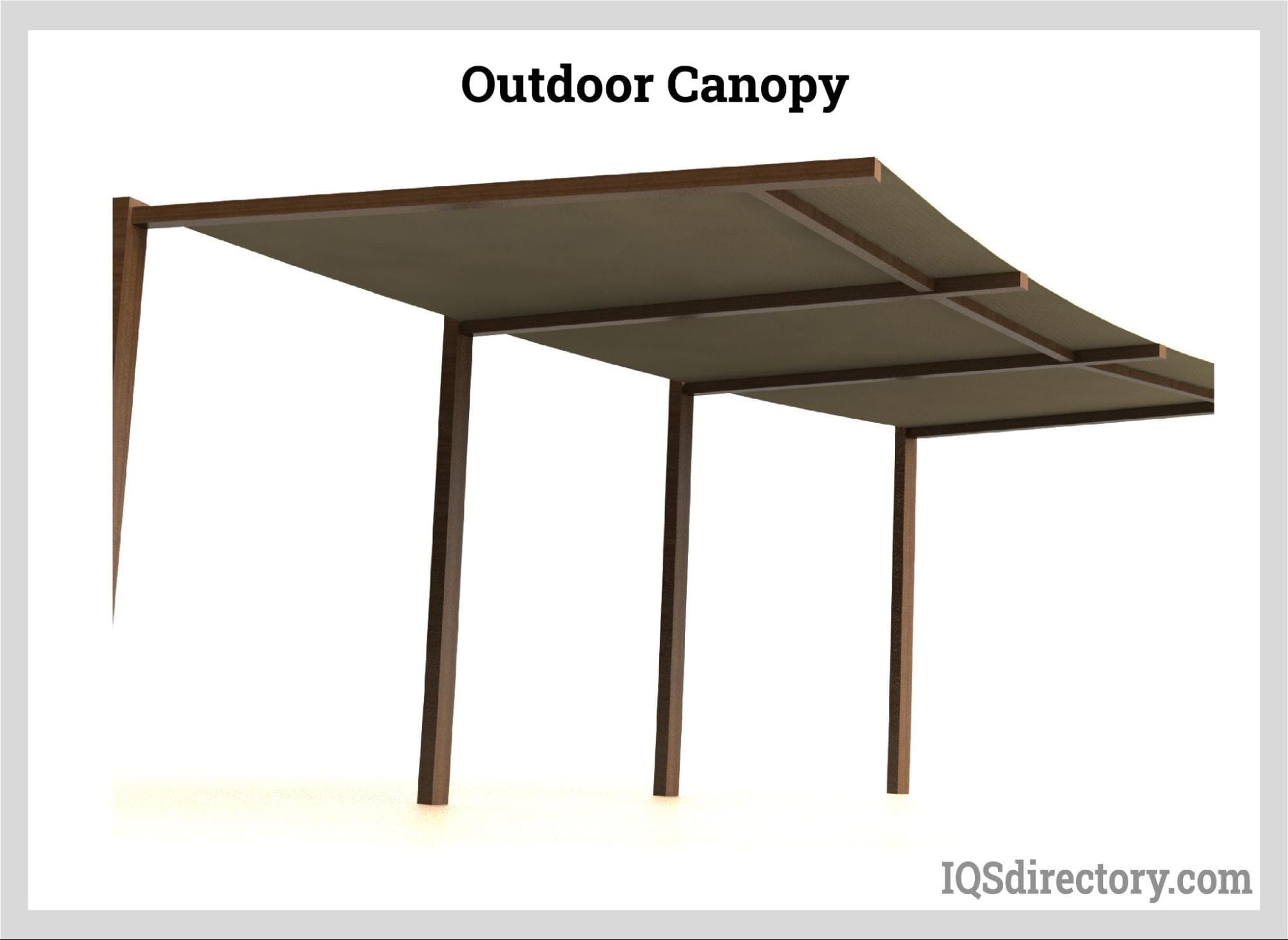
A canopy is a structure with a connected fabric or metal covering that can give shade or shelter from weather elements such as the sun, hail, snow, and rain. For example, a tent with no floor can be...
Please fill out the following form to submit a Request for Quote to any of the following companies listed on
This guide contains everything you need to know about contract sewing.
You will learn:
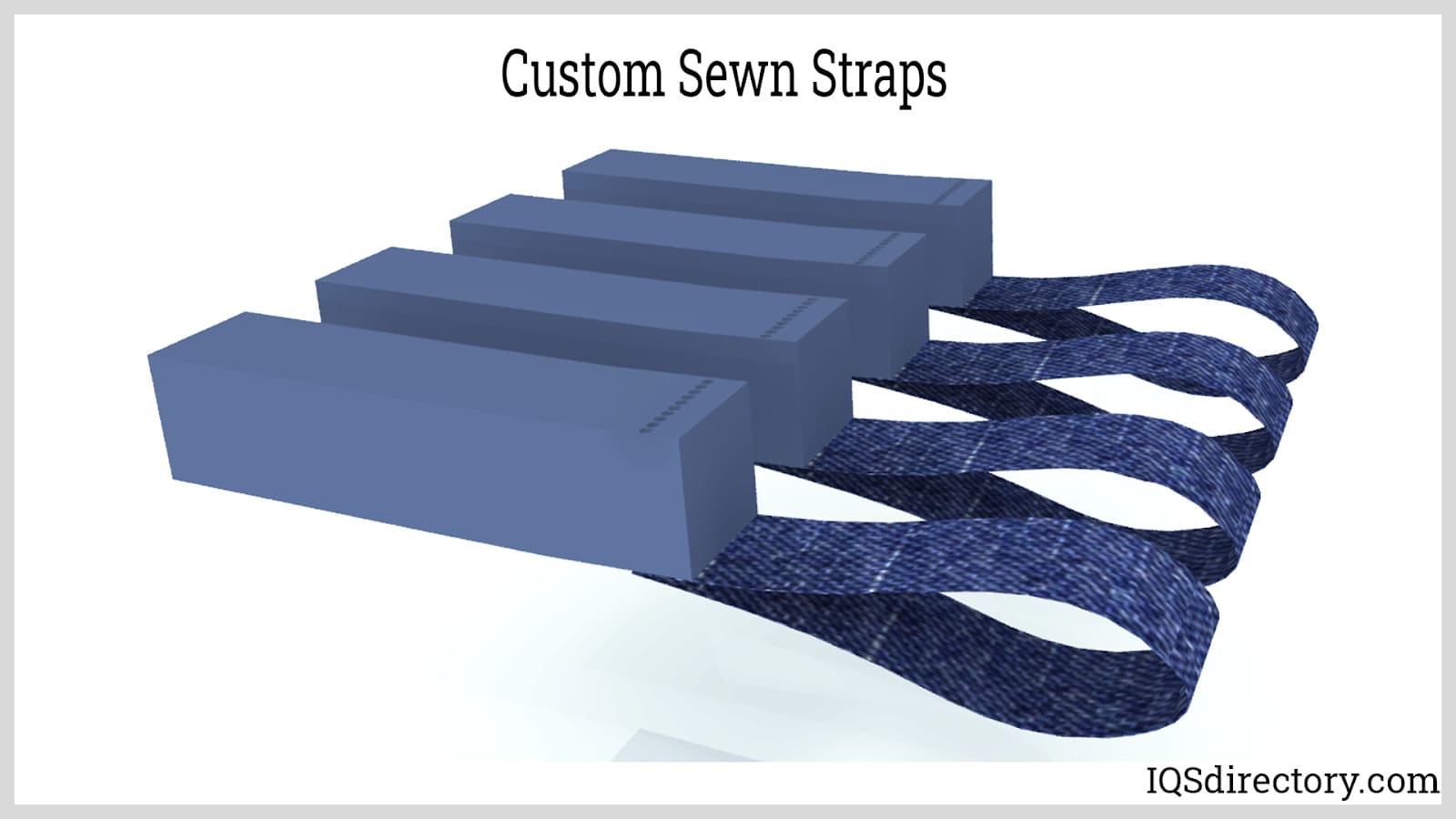
Contract sewing represents a specialized field that offers manufacturing services to companies, focusing on the production of an extensive array of products with the support of highly trained personnel and cutting-edge sewing machines. This industry's strength lies in its capability to deliver sewing solutions for soft goods across various sectors such as medical, military, clothing, aerospace, and custom clothing.
The contract sewing process is significantly more intricate and demanding compared to traditional sewing practices. Success in this field hinges crucially on the meticulous planning and preparation dedicated to each client's project, emphasizing quality and efficiency.
Another facet of contract sewing includes contract sewers—individuals who lend their expertise to contract sewing firms or manufacturers to execute small-scale projects, typically 100 pieces or fewer. These professionals excel in various sewing techniques and are instrumental in crafting garments and more sophisticated items.
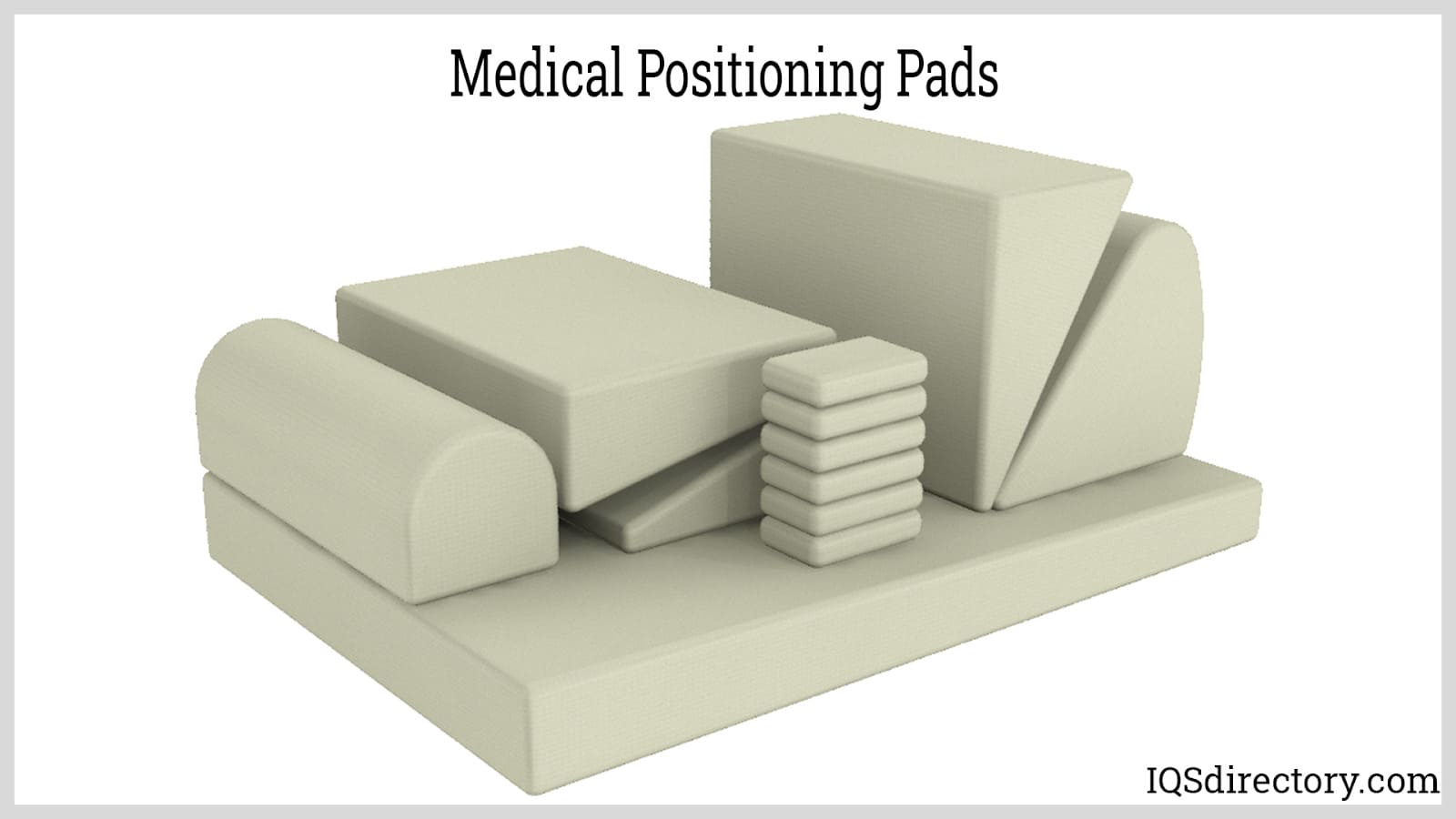
An important advantage of contract sewing is its ability to work with a diverse range of materials and fabrics, including vinyl-coated nylon, neoprene, Hypalon, canvas, anti-static materials, cotton, polyester, felt, plastic, webbing, and leather. Products crafted by the industry are tailored based on designs and concepts provided by their clients.
Contract sewing is a necessary industry used to support companies that do not specialize in sewing or needlework. The industry grew out of manufacturers' need to have items sewn for products they had designed but were unable to produce.
To fill the gap, manufacturers contract with sewing companies who serve as a supportive component in the completion and production of a variety of products. The specialized nature of sewing, as well as the technical aspects, has made contract sewing a vital part of the introduction and production of many of today's products.
The contract sewing industry offers services to companies that manufacture and produce items that require sewn fabrics as a part of their product line. Companies that use contract sewing are in an unrelated industry where sewing is only a small part of their production process.
The biggest reason that contract sewing has been so successful is its ability to take visions and ideas and turn them into reality. Industries that use contract sewing are not equipped to take their highly inventive ideas and make them a reality through their production processes.
An important benefit of contract sewing is its ability to produce large quantities of sewn products in short turnaround times, regardless of the size of the item to be produced. While clothing is often the first thing that comes to mind regarding contract sewing, it is only a part of what the industry covers, as can be seen below.
Fabrics for the automotive industry need to be durable as well as UV and heat resistant, since cars are exposed to the sun. Due to the nature of fabrics for car upholstery, a specially designed sewing machine with special attachments is required. The main concern with auto upholstery is the stitching, which must be secure and long-lasting. Additionally, the material and stitching need to fit seamlessly into the overall design of the car.
The textiles used in cars not only add decoration and softness to seats and the interior but also have a functional application. Unlike years ago, the types of materials used for car upholstery are no longer restricted to any one type of fabric and can include leathers, vinyl, cloth, and various types of sturdy fabrics.
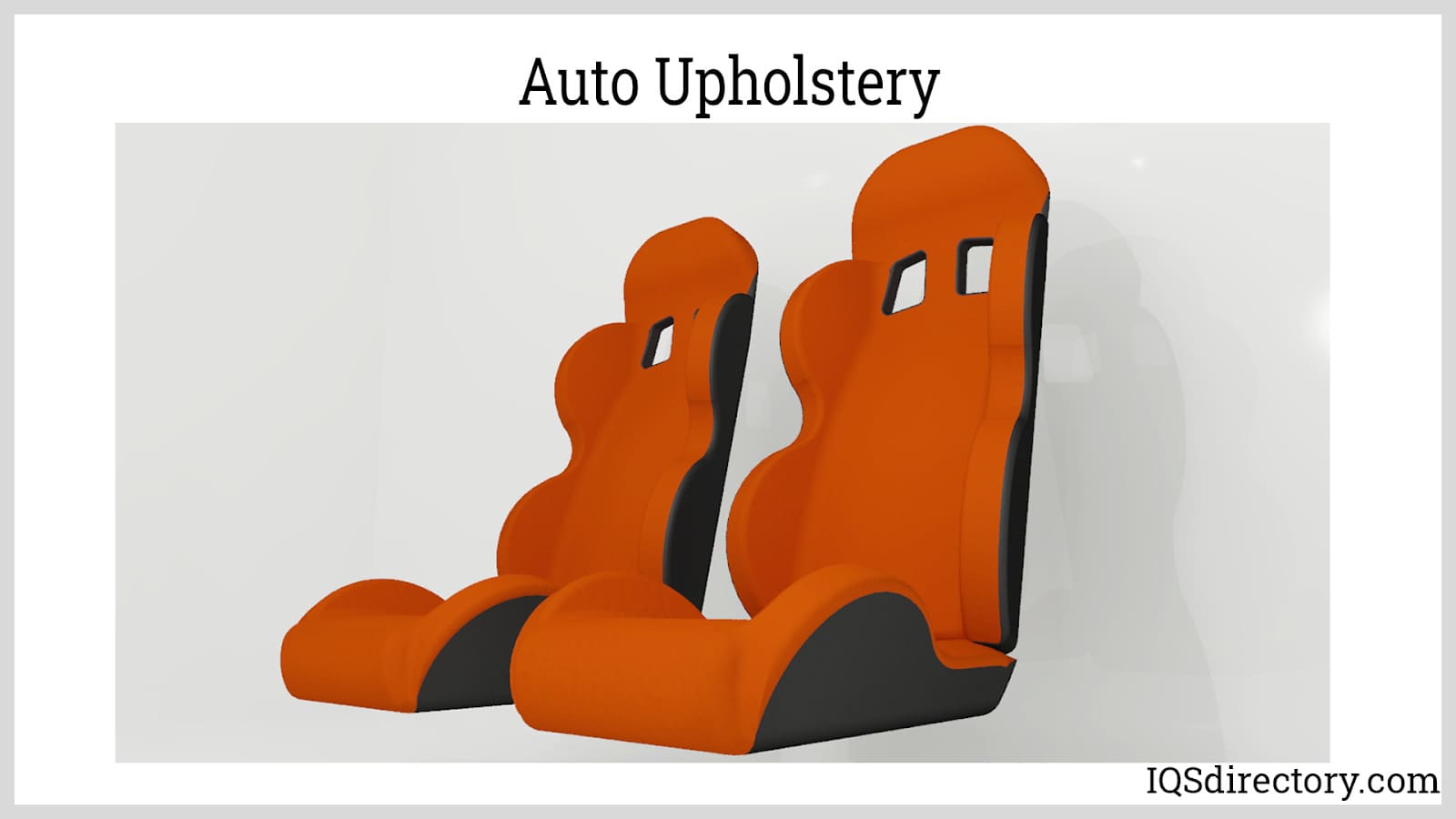
The sewing of airbags is challenging because they must be large enough to protect vehicle occupants while also being compact enough to fit in limited space. The fabric for airbags is very dense and compact to withstand the force of deployment. The heavily coated material is cut, sewn, and tested before being installed in a car.
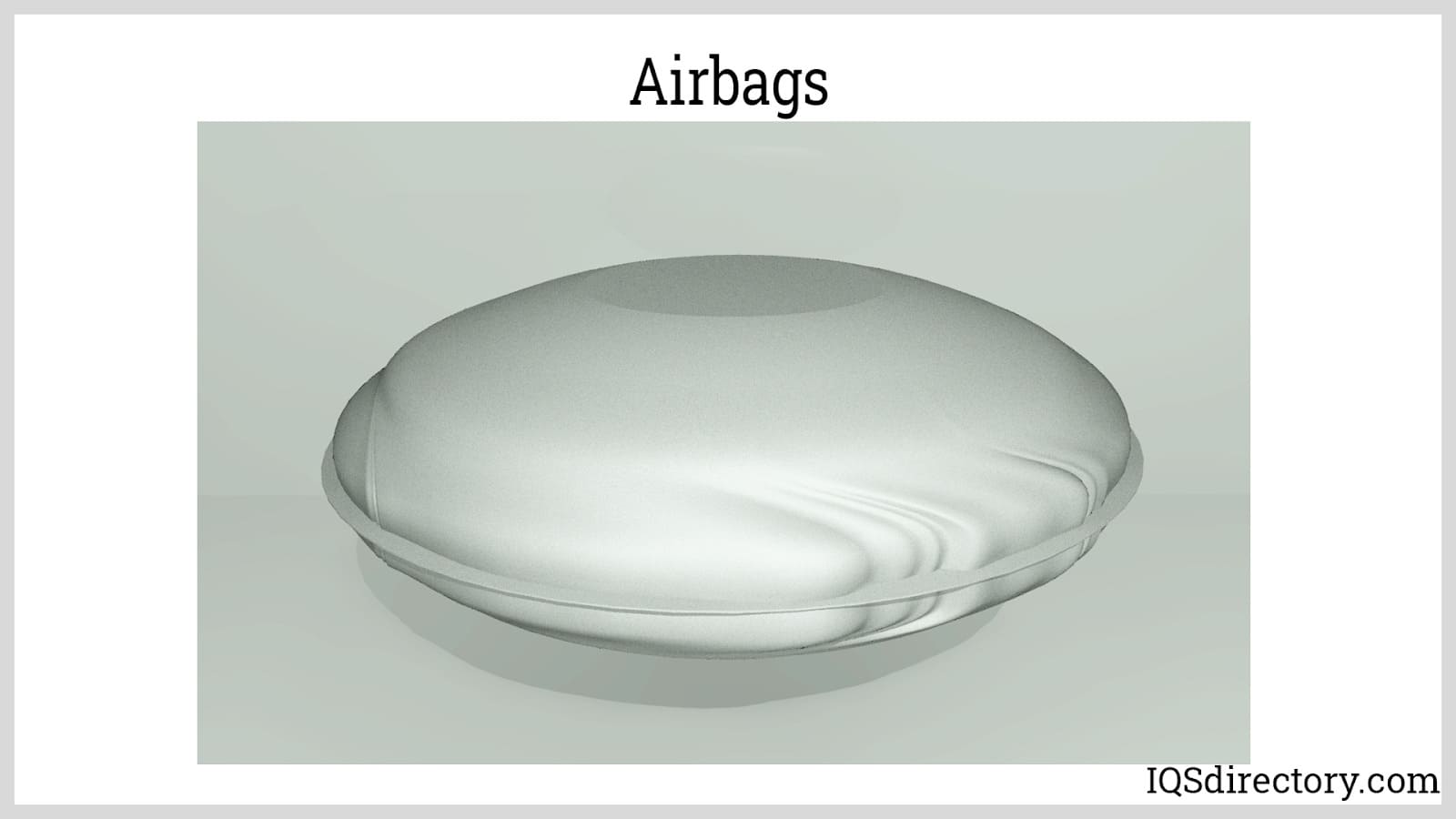
Knee pads are made with reinforced stitching for extra protection. Their design includes neoprene, nylon, and PVC to enhance strength and durability. Industrial-style knee pads are designed to protect workers from nails, broken glass, and various forms of debris. They must be comfortable while providing additional support to leg muscles and tendons.
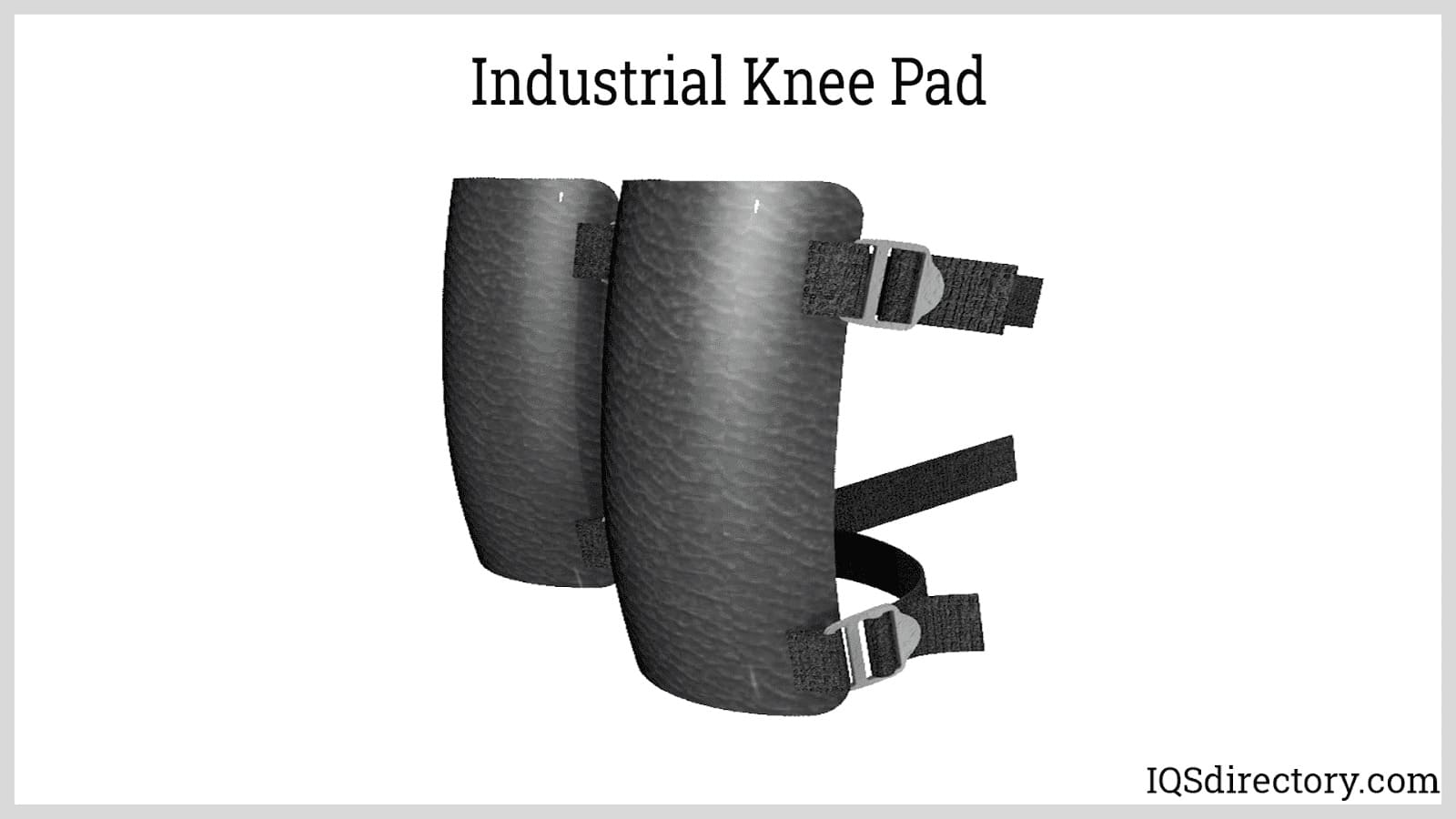
Industrial aprons are made from high-quality materials such as leather, cotton, polyester, rubber, and asbestos. They are designed to offer protection from water, chemicals, oil, and hazardous materials. They can be sewn and produced to fit various conditions and come in different types, including cobbler, no pocket, and bib aprons, as well as a variety of lengths.
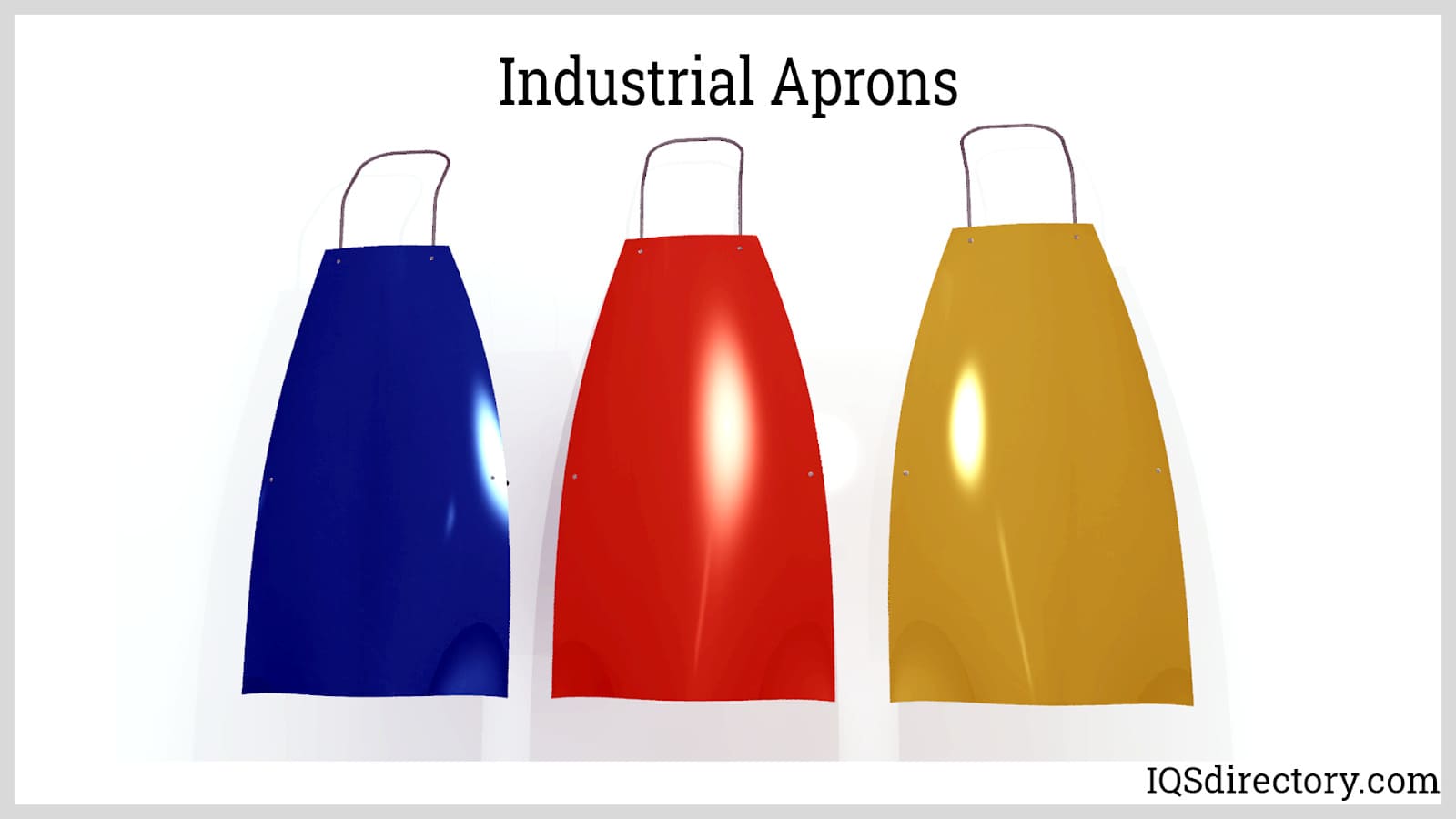
A great deal of time, engineering, and effort are required to produce a piece of luggage. Much of today’s luggage is made from heavy-duty nylon fabrics. The texture and strength of the material necessitate automated stitching machines with the durability to produce secure and permanent stitches. Luggage sewing encompasses a wide range of products, including duffle bags, sports bags, briefcases, and messenger bags.
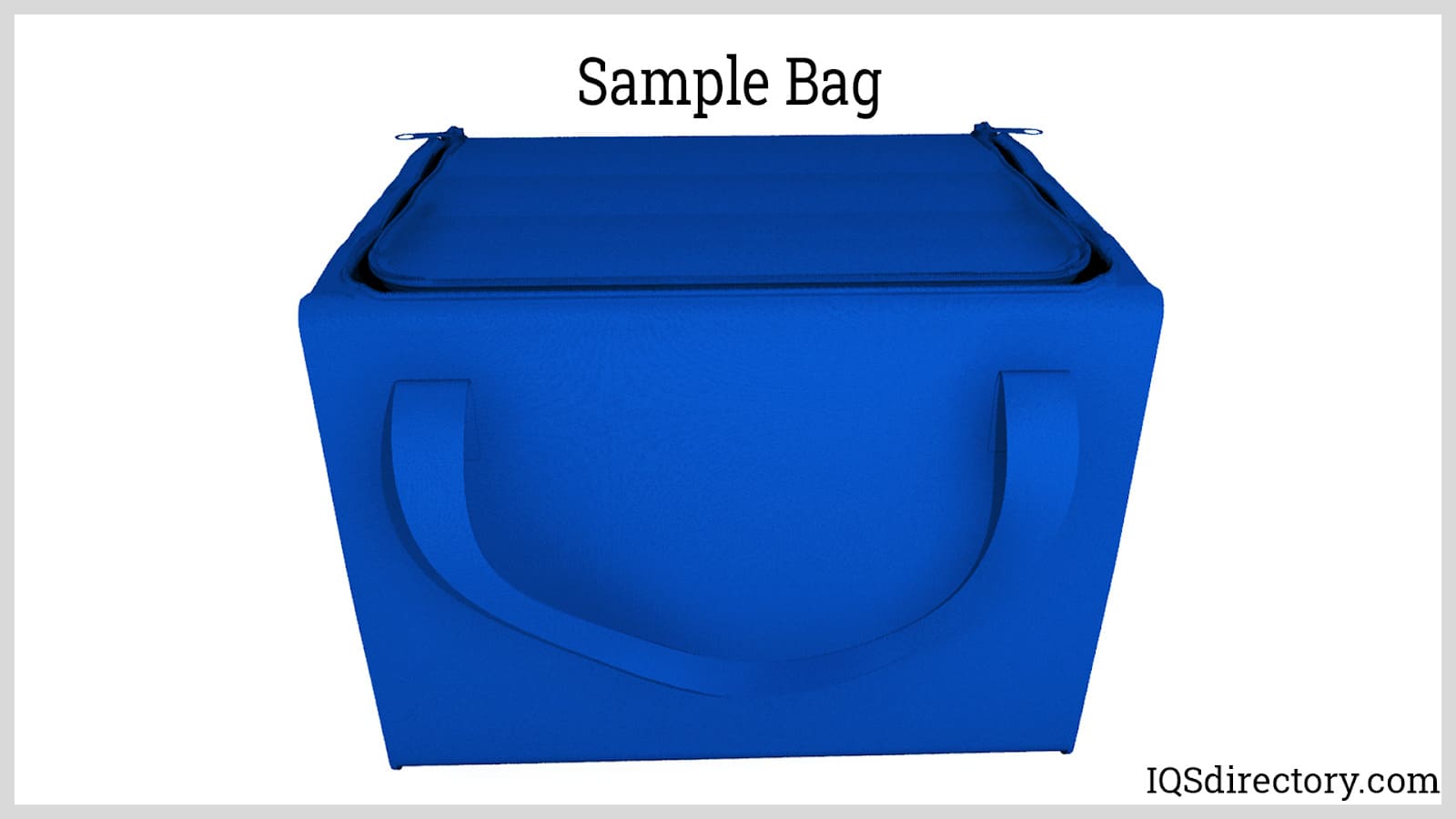
The core of an airplane seatbelt is its webbing, with a buckle attached. The webbing comes in hundreds of different colors to meet the needs of each airline. The form, shape, and connectivity of an airplane seatbelt are governed by government regulations, which require that every seatbelt be tested multiple times.
Though passengers may view an airplane seatbelt as just a part of the flying process, it is actually a crucial and essential safety device. It must be able to withstand 16Gs of force to be deemed acceptable for use.
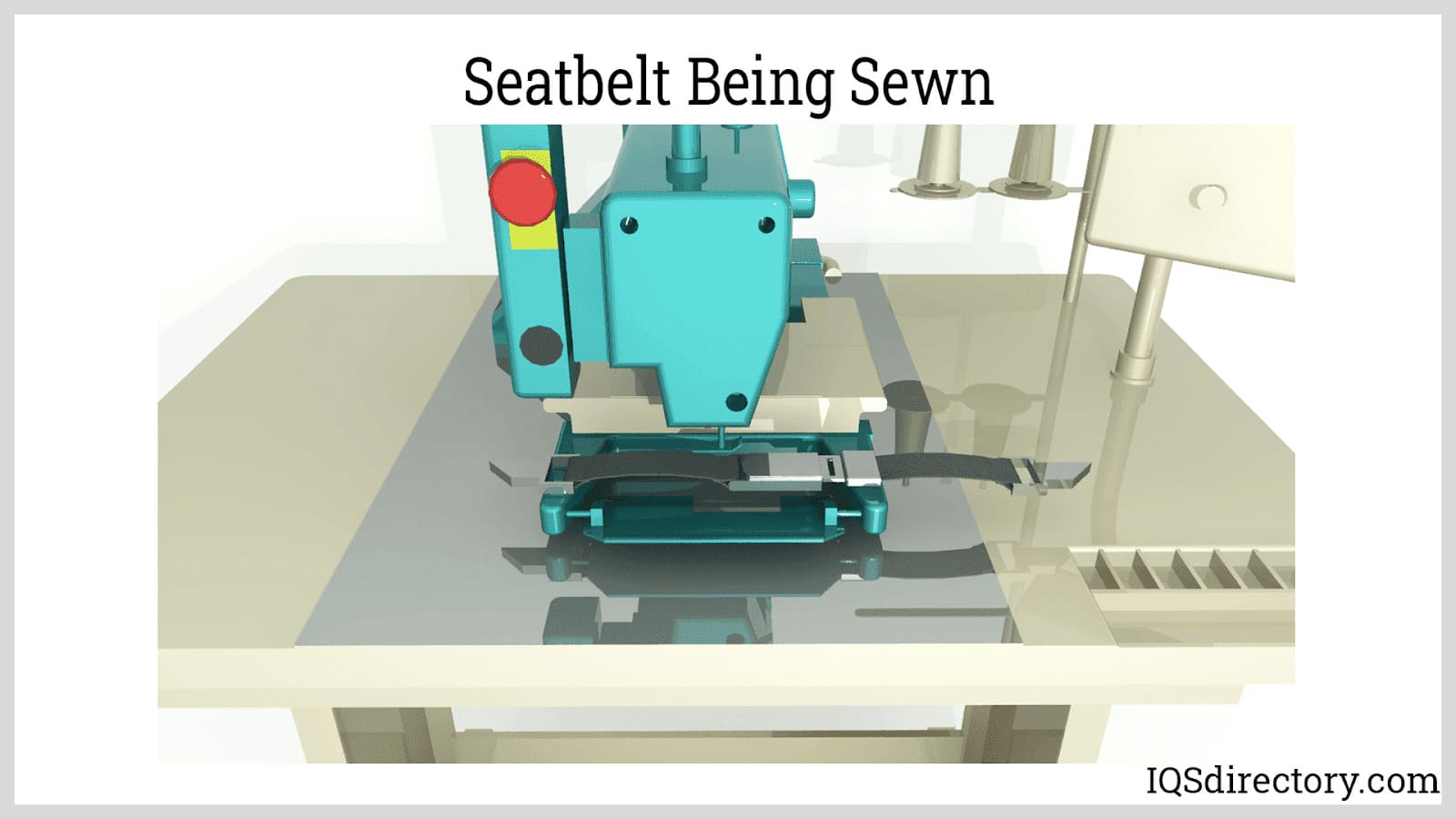
HVSA (High-Visibility Safety Apparel) wear is one of the most noticeable types of safety gear, often seen on highways, construction sites, and among traffic patrols. Think of it as the "neon sign" of safety wear—it stands out to ensure that workers are easily visible. The production and sewing of HVSA wear are guided by the American National Standards Institute, a bit like a rulebook for ensuring these garments meet strict visibility and safety standards.
There are three different categories for HVSA (High-Visibility Safety Apparel) protective gear: O (off-road), R (roadway traffic control), and P (public safety). Each classification is graded based on the reflective qualities of the material used.
The production of uniforms involves using universal camouflage patterns (UCP) and operational camouflage patterns (OCP), employing the sturdiest and most wear-resistant materials. To be accepted for military use, the materials must pass a variety of tests that assess blending, brightness, contrast, and detection abilities. The final choice for OCP includes a range of colors such as gray, artichoke, laurel green, American silver, grullo, and dark silver.
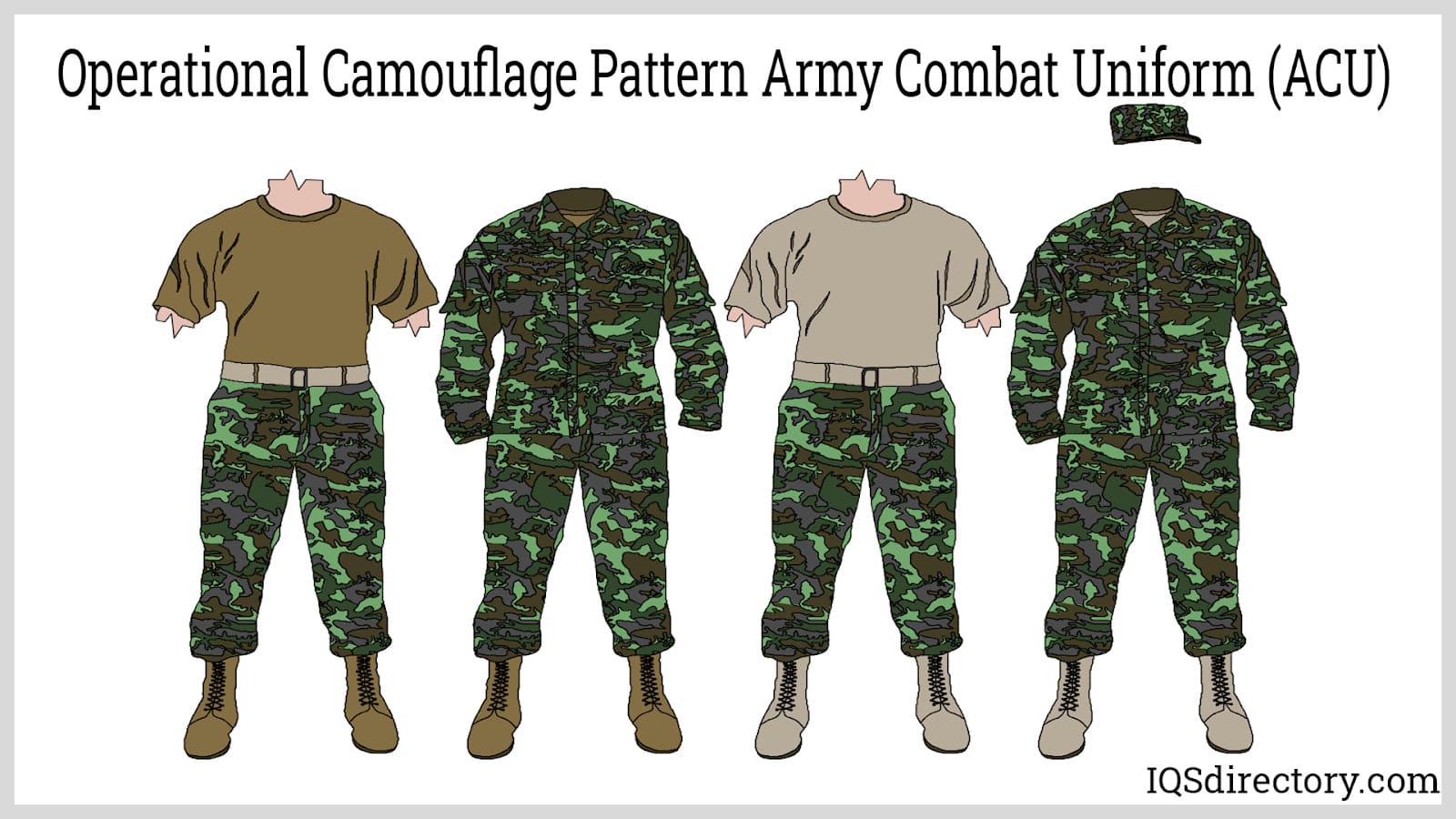
The main design factor for chair material is its ability to offer support and comfort. Chairs from the contract sewing industry are ergonomically designed with materials capable of withstanding the normal wear and tear of everyday use. A special feature of chair design is having an adjustable headrest and lumbar support. These chairs are commonly used in security and control rooms, as well as public safety dispatch centers.
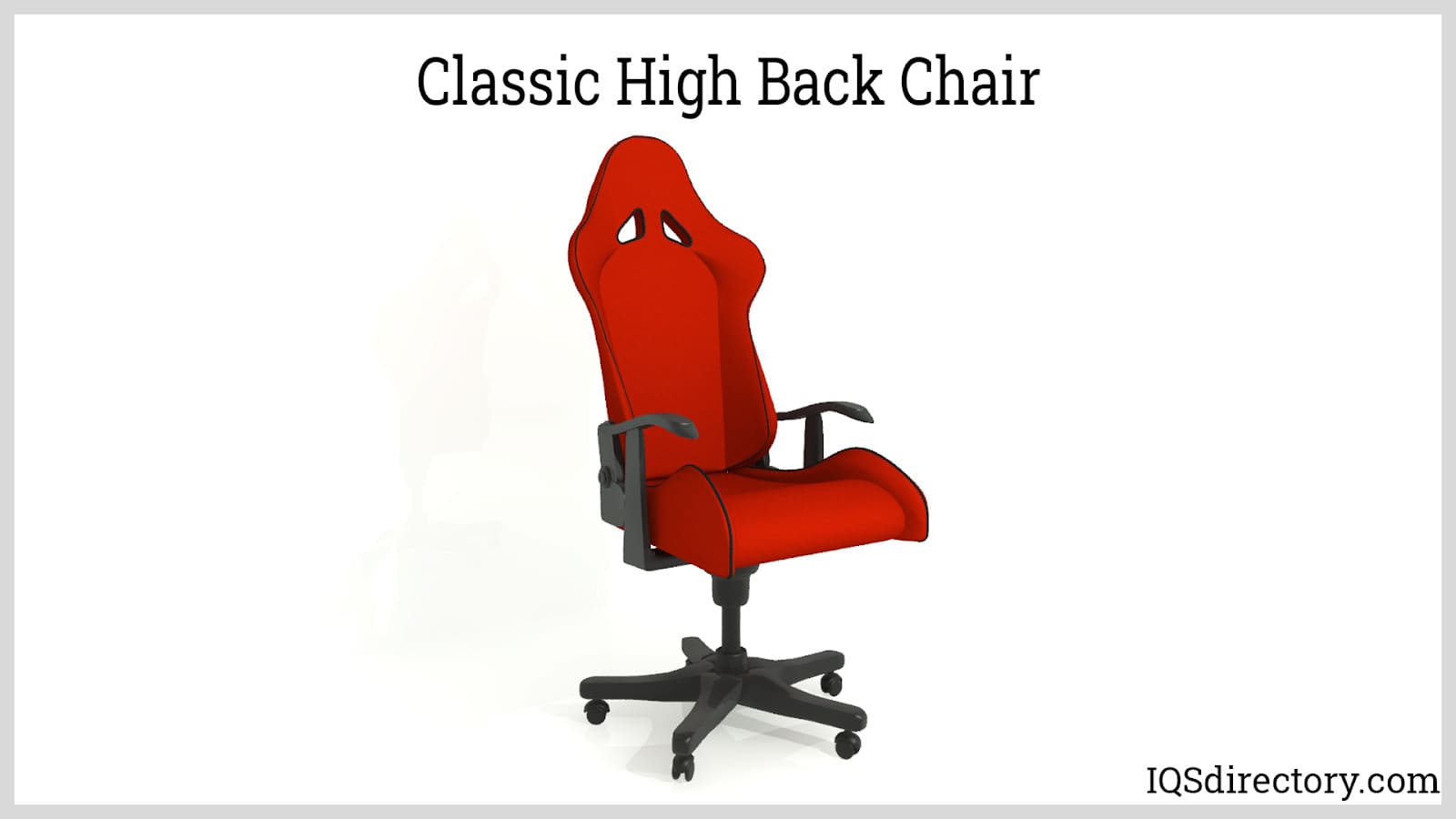
Industrial curtains must be produced to meet the specific specifications and requirements of the customer's industry. They are made from a variety of materials, including PVC film, vinyl, banna, and parquet. Industrial curtains are designed, configured, and dimensionally compatible to suit the requirements of the application. They feature headers with grommets and snaps made from long-lasting and highly resilient materials.
Manufacturers use industrial curtains for several reasons, including noise reduction, separation of production areas, safety, climate control, and prevention of product contamination.

The aerospace industry extensively utilizes contract sewing, particularly for space suits that must meet very strict and demanding regulations. Space suits are made from various types of materials, including synthetic polymers. The construction includes an inner layer of nylon, followed by a layer of spandex. Additional layers consist of urethane-coated nylon for pressurization, a layer of Dacron, and a layer of Neoprene.
Other applications for contract sewing in the aerospace industry include insulation for aircraft piping, environmental containers, fuel and fluid bladders, and PVC bags. The items produced are primarily focused on safety and protection during emergencies and must meet the highest possible quality standards.
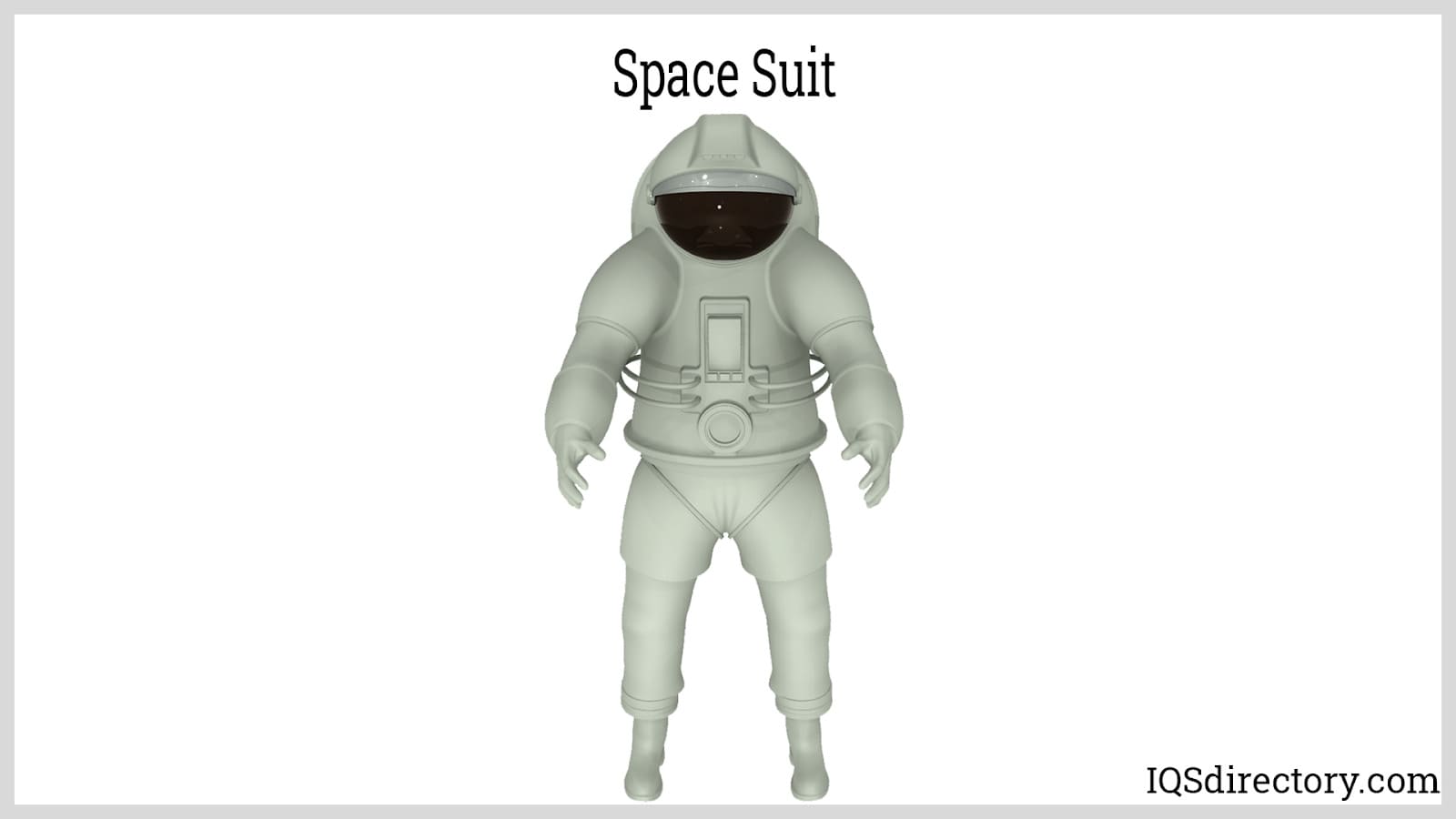
Among various industries, the medical sector relies heavily on contract sewing for the production of a wide variety of biocompatible items. Products include garments, organ holsters, and medical mesh for implants. The fabrics used in the medical industry must meet specific standards established by hospitals, including being biocompatible, durable, able to withstand stressful wear, and incapable of causing fatal damage.
The contract sewing industry produces a long list of items for medical use, including gauzes, bandages, blankets, and medical-grade fabric supplies. The medical industry relies on the high standards and quality of the contract sewing industry to provide sterile and safe medical fabrics.
The contract sewing process is an industrial method for mass-producing a wide range of products for commercial and industrial use. The production of these products involves selecting components that are assembled and connected through sewing.
Contract sewing is a vital industry that supports large manufacturers in planning, developing, designing, and perfecting designs and procedures. The term "contract sewing" succinctly describes the process used to create sewn materials.
The purpose of the prototype and design phase in contract sewing is to identify design flaws and develop methods for addressing them. This phase is based on the understanding that concepts and designs that appear promising on a computer may not always be practical in the production process. By catching errors and mistakes before moving into production, this phase helps save time and money.
Unlike in the past when patterns were produced in print, modern contract and industrial sewing patterns are created using computer-aided design (CAD) programs. CAD allows for the creation of detailed 3D representations of garments, enabling designers to inspect every aspect and make edits by undoing or modifying elements while keeping the overall design intact.
A 3D sample created with CAD eliminates the need for physical samples for photo shoots or communication with buyers, as these can now be completed electronically. Instead of maintaining a backroom full of stored patterns, CAD allows for patterns to be stored online for future projects. Once the CAD rendering is finished, it can be easily passed on to a pattern maker or technical designer responsible for production.
The instructions on a pattern are customized for each product, as there is no single way to complete the process. As shown in the example below, instructions for contract sewing are often very brief. In many cases, no instructions are provided, and the specifics are left up to the contractor.
The electronic pattern process encompasses every aspect of product development. For clothing, it displays the cuts for each size and the methods for cutting. A crucial part of this process is determining the consumption of materials used in production, which influences the final cost.
Once the pattern is approved, it is sent to the pattern printer, a wide-format printer similar to a plotter used for printing blueprints. This step may vary among manufacturers; some print the pattern on heavy material that will be used in the cutting process.
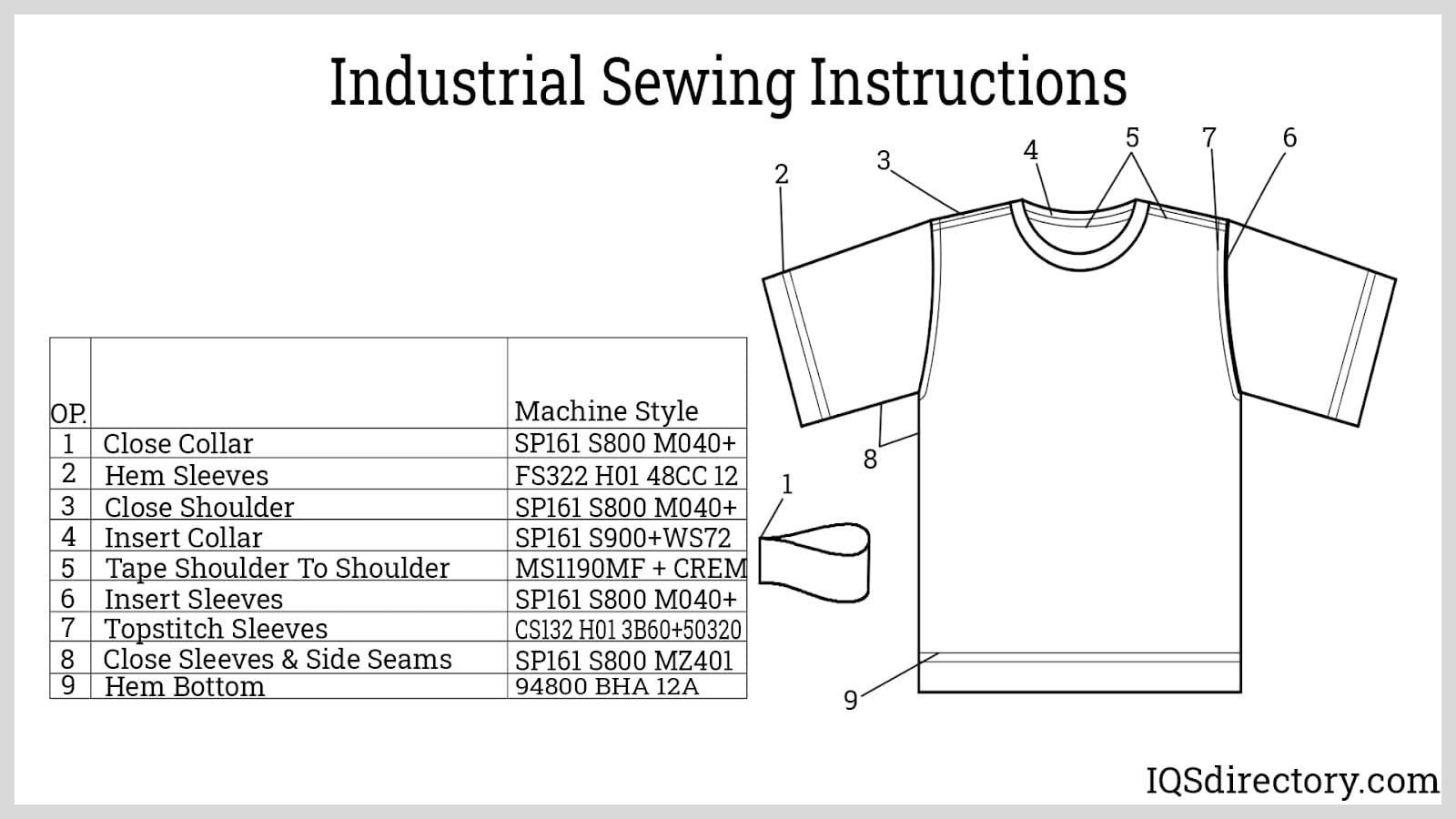
Once production development is approved, the pattern undergoes marking and grading to determine the yield. This process helps calculate the amount of fabric needed for ribbons, lining, buttons, zippers, and other components. When the fabric arrives, a pre-production sample is made.
Before sending the fabric to production, it is inspected and preshrunk. While this may not apply to all contract sewing projects, inspecting and approving the materials—whether leather, polyester, vinyl, or another type—is a common practice. Ensuring that the materials are in good condition is crucial for producing a quality product.
The cutting process involves laying the pattern out on the material to be cut. A very sharp, saw-like cutting tool then slices through several layers of fabric, following the guidelines of the pattern. While this method is used for manufacturing cloth or clothing items, it may vary for heavier materials such as leather or vinyl.
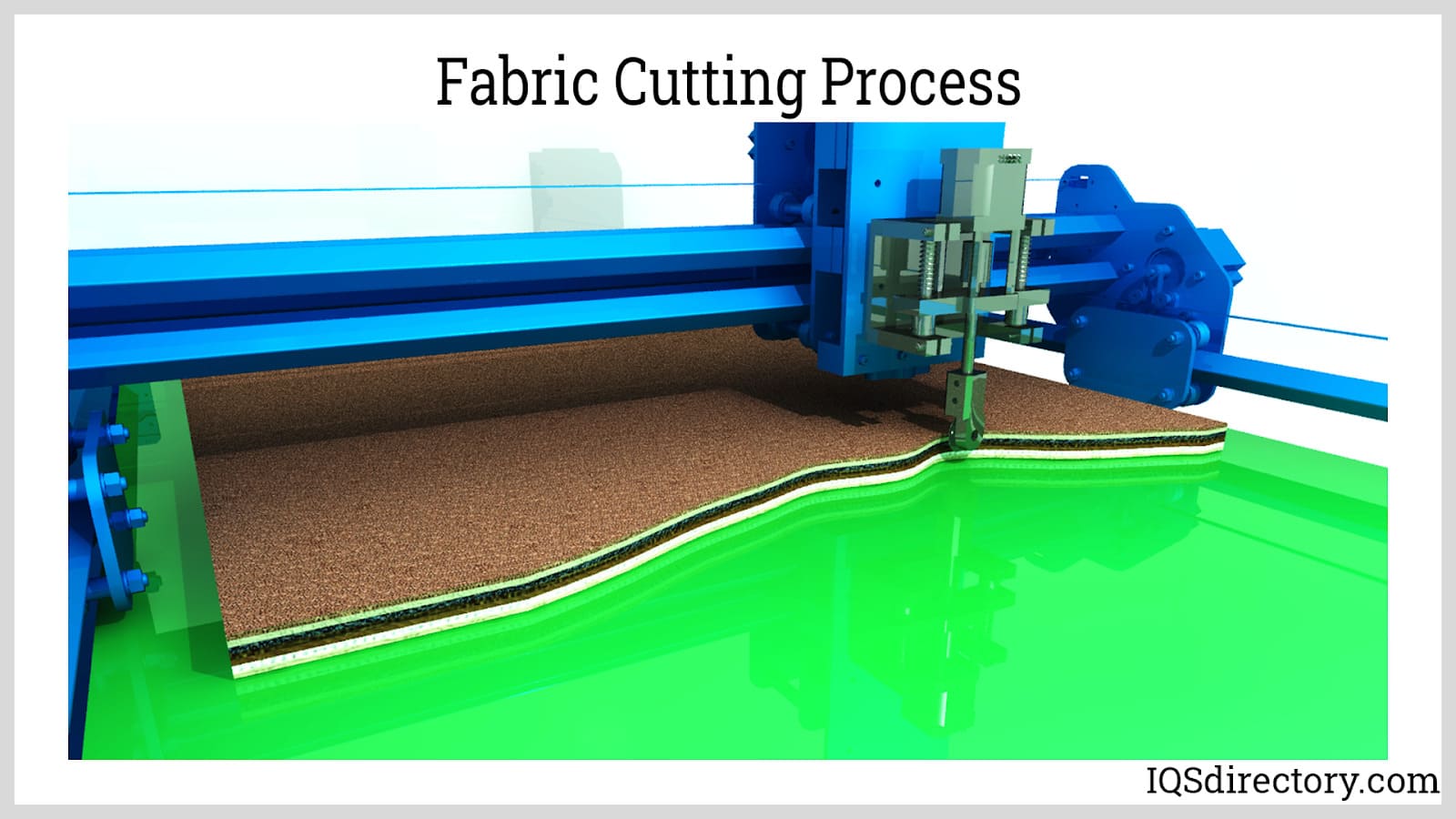
Aside from hand cutting, a more efficient method is the automated high-ply cutting system designed specifically for cutting garments. Instructions for cutting are developed on a computer, which determines the optimal way to cut the fabric to minimize waste. In CNC (computer numerical control) style, these instructions are downloaded into the automated cutter to guide it through each cut.
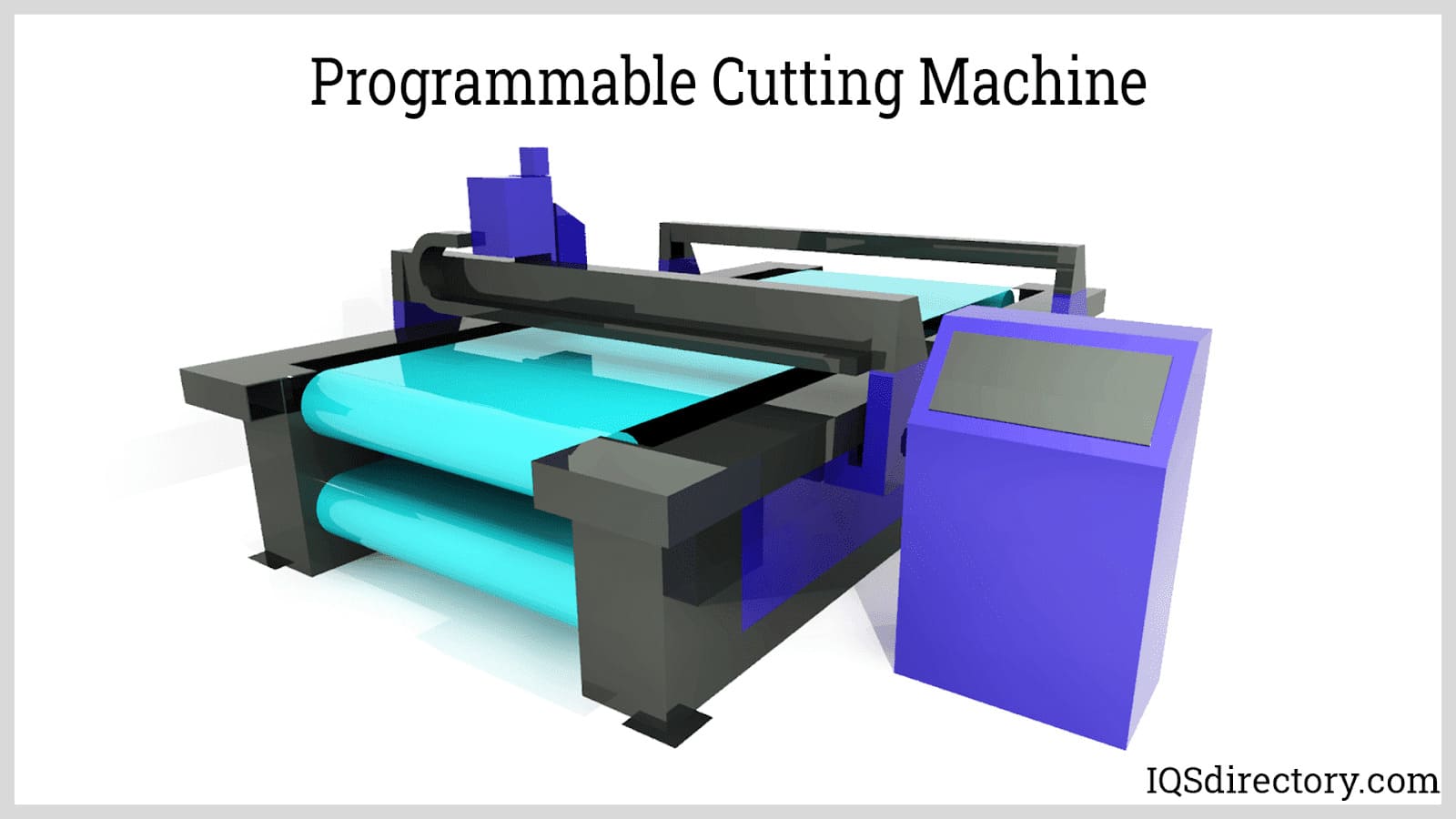
The process of sewing in contract or industrial settings differs significantly from a single person working at a sewing machine. In industrial sewing, the process resembles an assembly line. Each person performs a specific part of the assembly, with the item passing through a series of operations before being completed. Individual tasks may include sewing on a piece, adding a stitch or clip, or adjusting the positioning of the material.
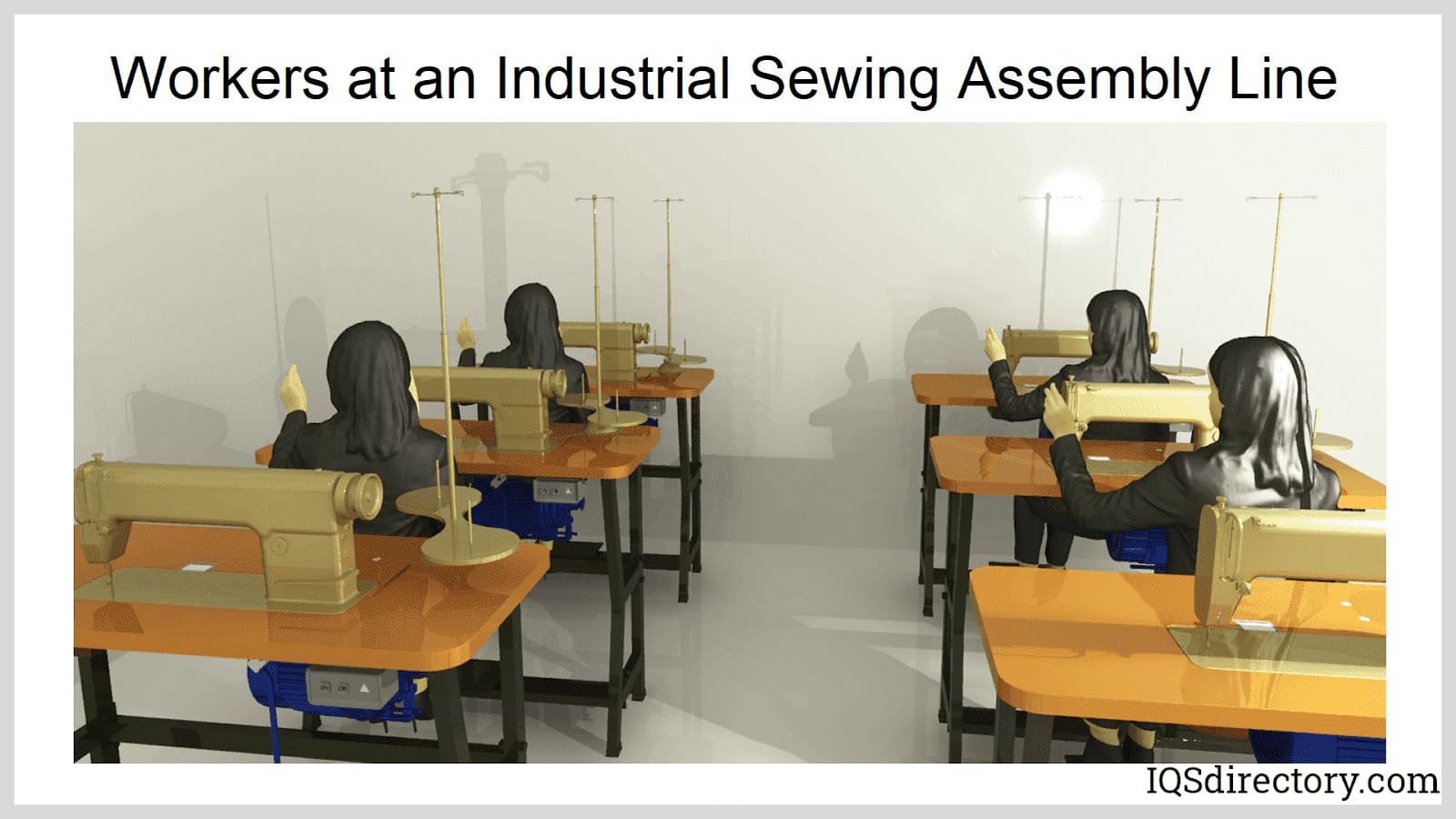
The proper selection of the type of stitch depends on the design of the final product and the material that is being secured.
The single needle lockstitch is the most common mechanical stitch, creating a smooth seam that does not pucker. It uses one needle and two threads that interlock within the fabric.
Double needle lockstitches are similar to single needle lockstitches but use two needles. This can sometimes result in puckering.
The zigzag stitch is similar to the lockstitch but produces a back-and-forth zigzag pattern.
A cover stitch is a double or triple stitch used for hemming knit fabrics and seams that stretch. On one side of the stitch, you see two parallel lines, while the underside features a zigzag pattern connecting the lines.
A bar tack is a series of closely spaced stitches used to reinforce areas of a garment that are subjected to stress or wear.
The box X stitch is a square-shaped stitch with an X in the middle, commonly used for securing straps or handles to fabric bags.
The Mauser stitch is a flatlock stitch created by a specialized machine that forms threads into a flat, interlocking pattern. It is known for being incredibly durable and comfortable, especially when placed against the skin.
The post bed lockstitch is performed by industrial sewing machines to stitch heavy-weight items such as car seats, furniture, and sporting goods.
The blind stitch is an invisible stitch used for hems or joining two pieces of fabric. It is hidden in the folds of the material and only becomes visible when the fabric is pulled apart.
The nine stitches listed above are just a sample of the various types used by contract sewing companies. The appropriate type of stitch is selected based on the needs of the material and product. Stitch selection is closely related to the dynamics of the material and its intended use.
The contract sewing industry can transform any type of material into a component for another product or a final finished piece. The range of materials is vast and includes various forms of rubber, plastics, polyesters, and fabrics. An essential aspect of the sewing industry is selecting the right material for a project, as this choice greatly influences the finished product.
Several factors contribute to the choice of materials for a project, including strength, texture, product design, and the purpose of the product. The materials selected for manufacturing operations can differ significantly from those chosen for a fashion show.
Materials are divided into two categories: natural and man-made. Natural materials are derived from nature, while man-made materials are produced through chemical processes and manufacturing.
Cotton is a common material derived from a plant. It has been used for thousands of years to produce a variety of items. Cotton is soft, breathable, lightweight, and durable.
Like cotton, linen is derived from a plant and is a breathable material. It is easy to handle and work with, as well as durable. Linen is suitable for upholstery, curtains, and projects that require a strong yet lightweight material.
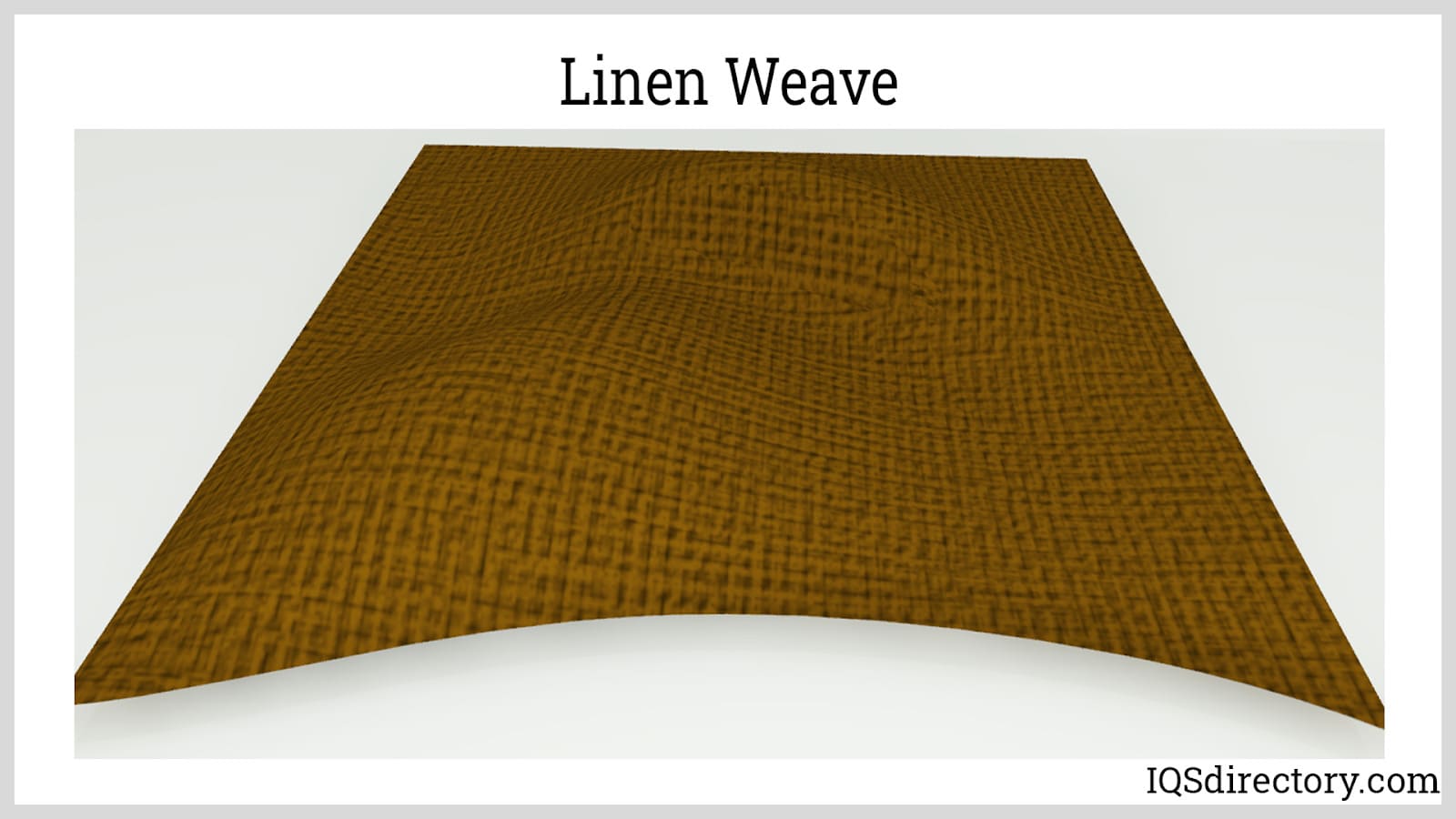
Jute is another material derived from a plant, specifically the bamboo plant. It is very stiff, sturdy, and durable, making it ideal for floor decorations and certain types of upholstery.
Wool, a material with a long history, comes from the hair of sheep. It is a heavy, durable fabric that is excellent for projects involving winter or cold weather.
Silk is a natural protein fiber obtained from the cocoons and webs of spiders and moths. While the process of making silk can use various forms of web or cocoon material, it is typically derived from those produced by moths or caterpillars. Silk is highly regarded for its softness, lightweight nature, and exceptional durability.
Polyester is a synthetic resin created by mixing polymers with cellulose acetate ester. It is economical, offers bright colors, and can be easily shaped. Polyester is manufactured using a combination of natural chemicals and synthetics. It is a strong fiber that is highly resistant to stains.
Rayon is made from purified cellulose found in wood pulp. Although rayon is based on natural cellulose, it is enhanced with chemicals, making it semi-synthetic. A common form of rayon is viscose rayon, which resembles cotton. Rayon is a versatile material that can be formatted, configured, and shaped into a wide variety of forms.
Fiberglass is made from woven glass fibers. It is lightweight, highly durable and strong, weather-resistant, and available in a variety of textures. Fiberglass is a type of reinforced plastic blended with thin glass filaments.
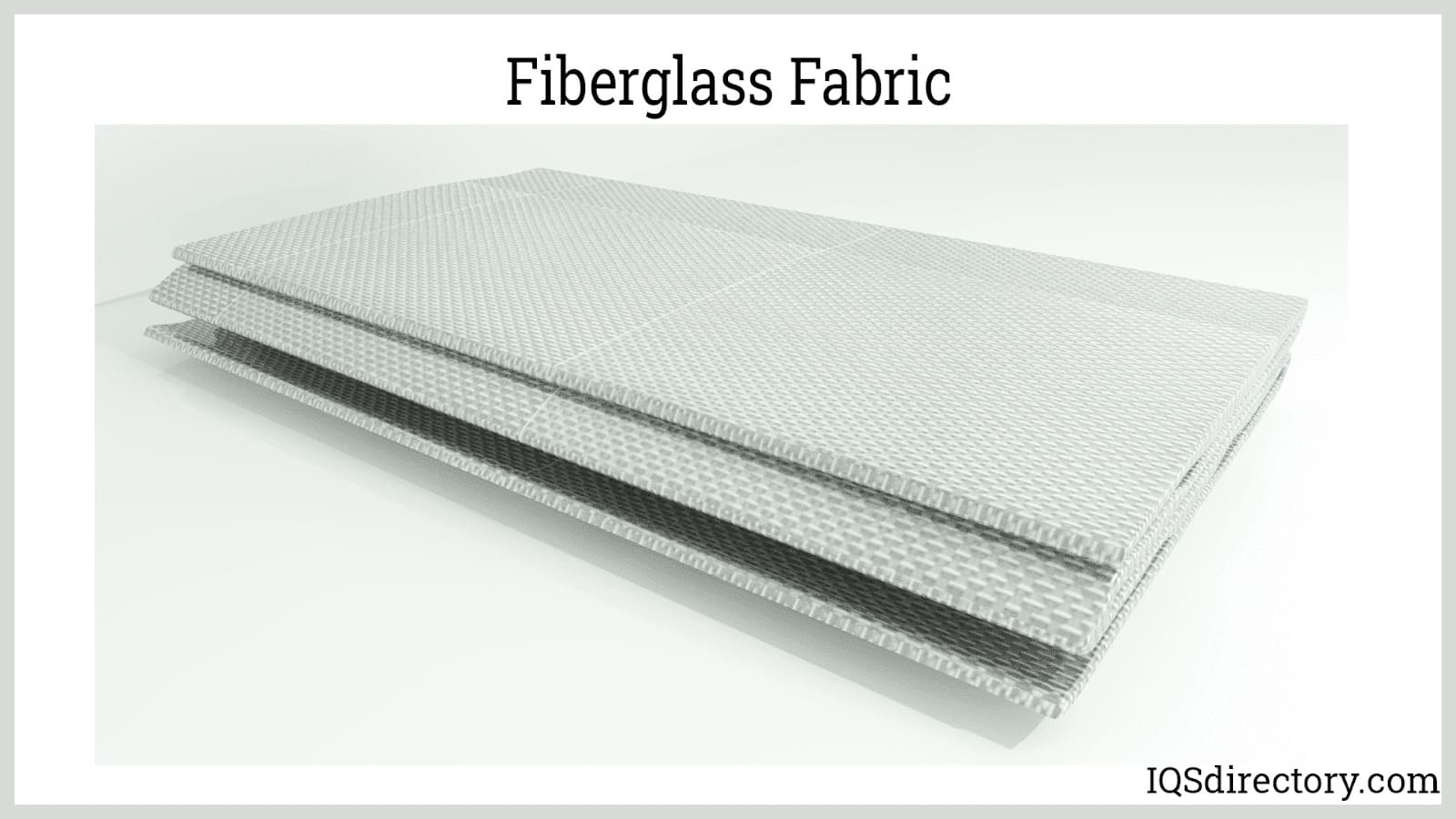
Vinyl is made from a synthetic resin containing polyvinyl chloride (PVC). It is tough, durable, and has exceptional flame-retardant properties. Known for its versatility, vinyl can be easily shaped, configured, sewn, and fabricated. It is used to make a wide variety of products, including protective gear, shower curtains, and raincoats.
Acrylic fiber fabrics are made from the synthetic polymer acrylonitrile, derived from petroleum-based chemicals mixed with various monomers. Acrylics are known for their heat retention and lack of breathability. They are commonly used in the production of sports equipment such as tracksuits, hoodies, and athletic pants.
Canvas is a highly durable woven fabric with multiple uses in the production of various products. It is made from the weaving of materials such as hemp, flax, cotton, or yarn. Canvas is commonly associated with producing tents, sails, bags, and sturdy cases.
Contract sewing plays a vital role in various industries by supporting the production of commercial and industrial products. Often, contract sewing companies collaborate with a range of producers to help bring designs and concepts to life.
The basic function of the contract sewing industry is to assist producers who do not specialize in sewing by creating items and components that aid in their production process. With many years of experience, sewing companies have the expertise to produce prototypes, suggest design improvements, and help develop a production plan.
Many fabric components for aircraft are produced by the contract sewing industry. This includes seat belts, upholstery for seats, carpeting, and the special pouches on the backs of seats. Products and components for the aircraft industry are closely regulated by the Federal Aviation Administration (FAA), which sets standards for safety and the protection of passengers and crew members.
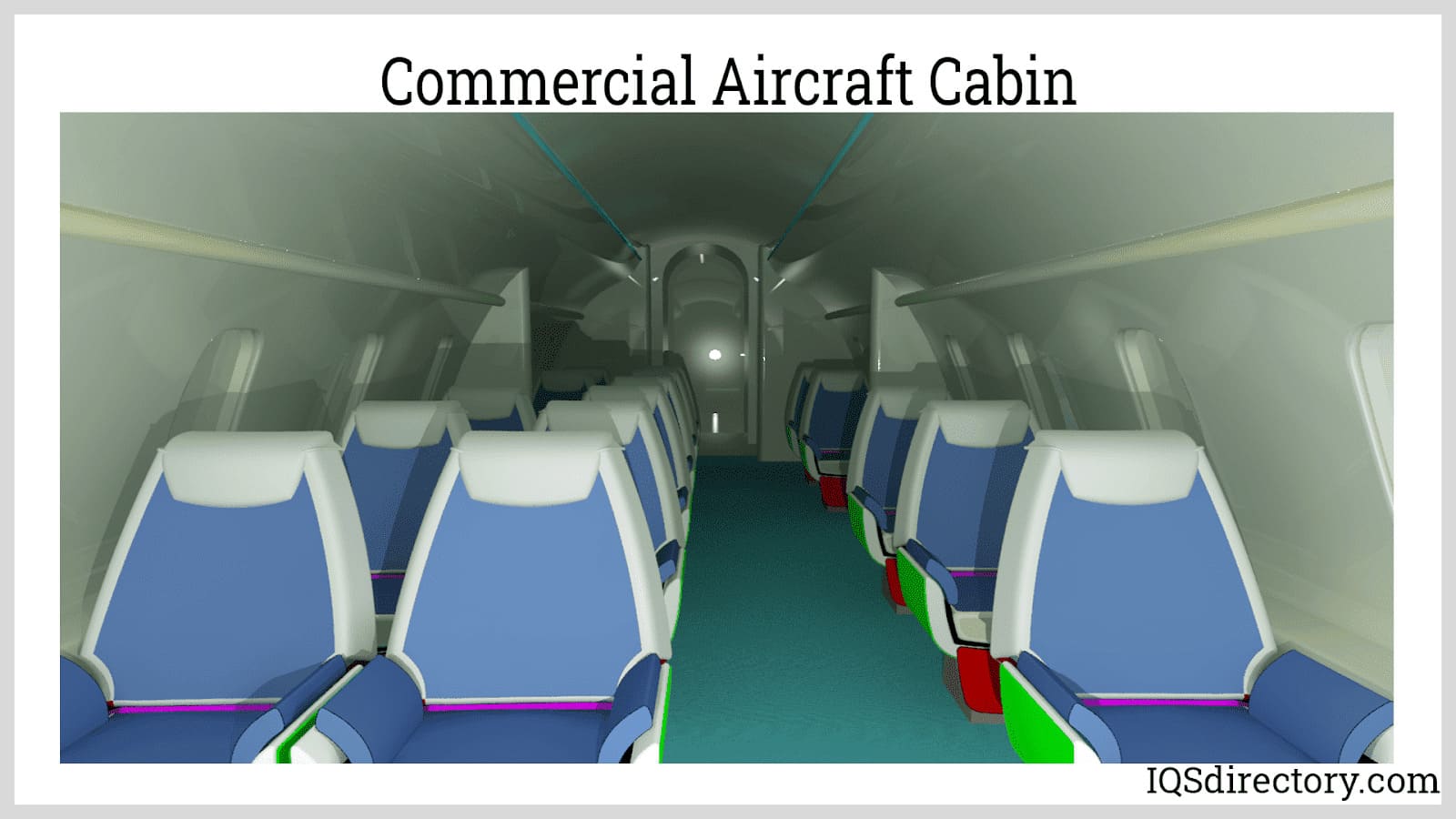
Industries that handle large amounts of cash require money bags that are sturdy and capable of withstanding constant use. Money handling bags come in various sizes to accommodate different cash handling situations. They are designed with heavy-duty, tightly fitting zippers equipped with locking mechanisms. To help organize cash, numbered security seals can be added to track the location and pickup time. The primary function of money handling bags is to ensure security and safety.
The purpose of shipping bags is for direct delivery services. Similar to bank bags, delivery bags must be secure, safe, and have a minimal risk factor. They are made from extremely strong materials to ensure that items remain safe and are delivered properly. The main use of delivery bags is by courier services.
Sewing services for the military follow a distinct business model due to the military's established standards for every item they procure, known as MIL-STD regulations. Unlike products produced for private and public companies, military items are manufactured according to specific directions and instructions to ensure high quality and adherence to strict standards.
Military sewing projects encompass a variety of items, such as bags, parachutes, webbed safety harnesses, and medical aid kit bags. Each of these must be manufactured to strict and precise standards.
The primary role of the contract sewing industry is to produce clothing. Designers develop and plan their apparel items, then transfer the production to contract sewing specialists. These experts not only create prototypes but also provide recommendations for design adjustments to improve and streamline the manufacturing process.
In air filtration systems, filters are essential for capturing particulates and allowing clean air to flow through. The contract sewing industry produces these fabric filter bags in various sizes and materials, including polyester, polypropylene, mesh, nylon, and flannel. These bags are designed to trap airborne pollutants and waste, ensuring that both the air and machinery remain clean and clear.
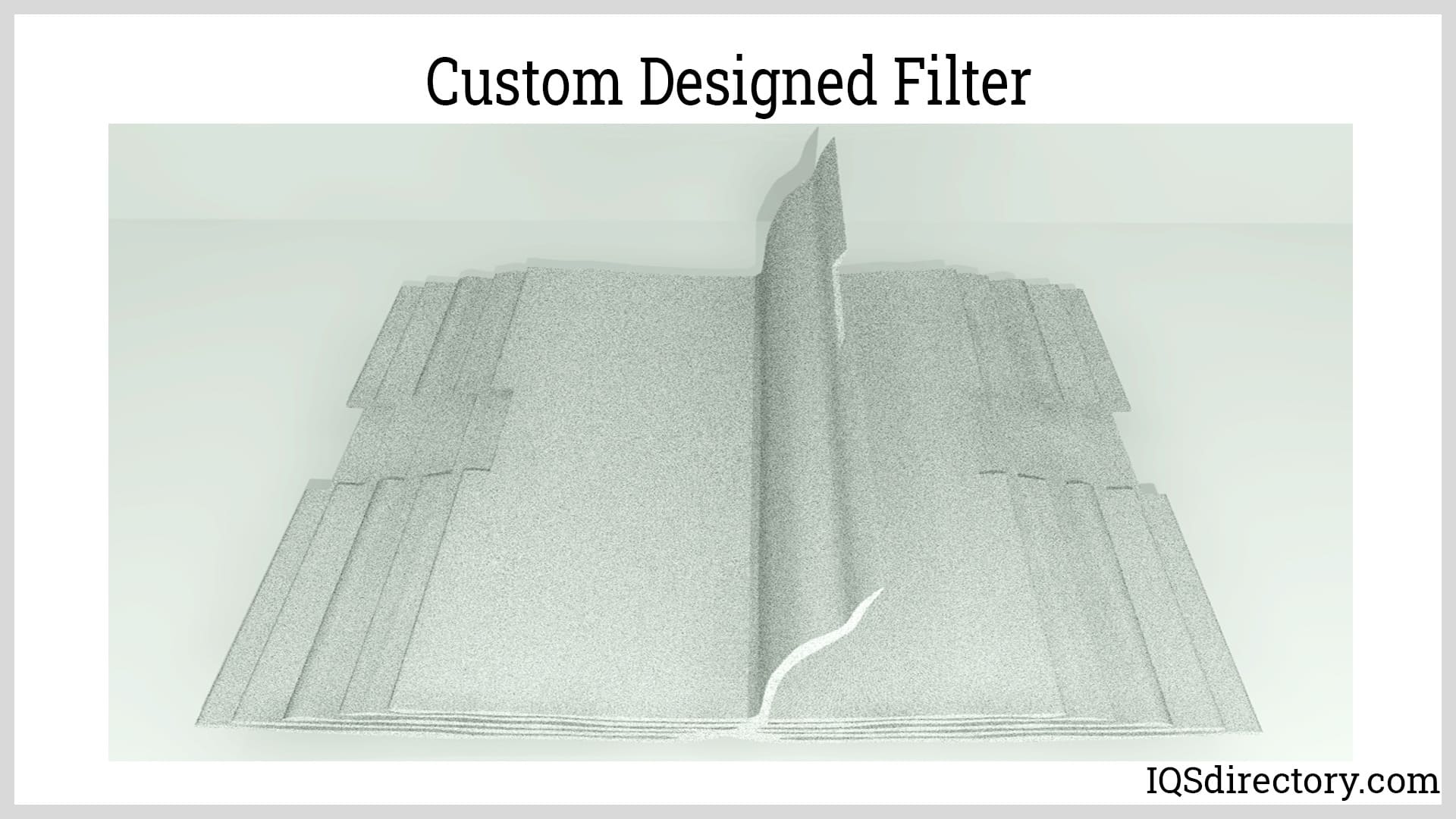
In the marine industry, the contract sewing sector designs and manufactures protective coverings for boats and marine equipment. These covers, made from durable marine-grade fabrics, are intended to safeguard equipment while moored or in storage. Given that boats vary in size and shape, marine covers are available in a range of styles and can be customized with various accessories.
The sports and athletic industries depend on contract sewing to create a diverse array of products, including golf bags, club covers, uniforms, protective gear, training outfits, and more. A distinctive feature of these products is the requirement to sew team logos onto the final items, an integral part of the original design process.
In the automotive industry, contract sewing focuses primarily on vehicle interiors. Similar to the aircraft industry, the United States Department of Transportation (USDOT) has stringent standards for producing components for automobile and truck interiors. A key concern is ensuring that materials used are non-toxic and safe for occupants.
The distinct aspect of vehicle interior products is that many of the enhancements, such as airbags, are not visible but must meet strict safety standards. Additionally, the contract sewing industry produces various components such as pouches, seat arms, and upholstery, all of which contribute to the overall functionality and comfort of the vehicle's interior.
Industrial sewing differs significantly from home sewing. While both use robust and durable machinery, industrial sewing equipment is distinguished by its emphasis on precision, accuracy, and efficiency. Unlike domestic sewing machines, industrial models are designed to meet the high demands of contract sewing, which often requires more advanced technology and higher performance levels. Additionally, industrial sewing equipment is typically more expensive due to its specialized features and capabilities.
Industrial sewing produces items with a professional finish, characterized by tight seams, clean cuts, and exceptionally secure connections. Beyond these fundamental qualities, industrial sewing is notably faster and more reliable compared to domestic sewing machines, making it ideal for high-volume and precision-focused production.
Flat bed sewing is employed to join flat pieces of fabric, resulting in a professional seam. While it resembles the sewing done on domestic machines, industrial flat bed sewing distinguishes itself by its speed, precision, and attention to detail, allowing for faster and more accurate production.
Cylinder bed sewing features a cylindrical sewing surface designed for stitching materials that require circular sewing. The fabric passes over and under this column, facilitating more efficient and precise stitching. Cylinder beds typically have diameters ranging from 5 cm to 20 cm, accommodating various sizes of circular or tubular components.
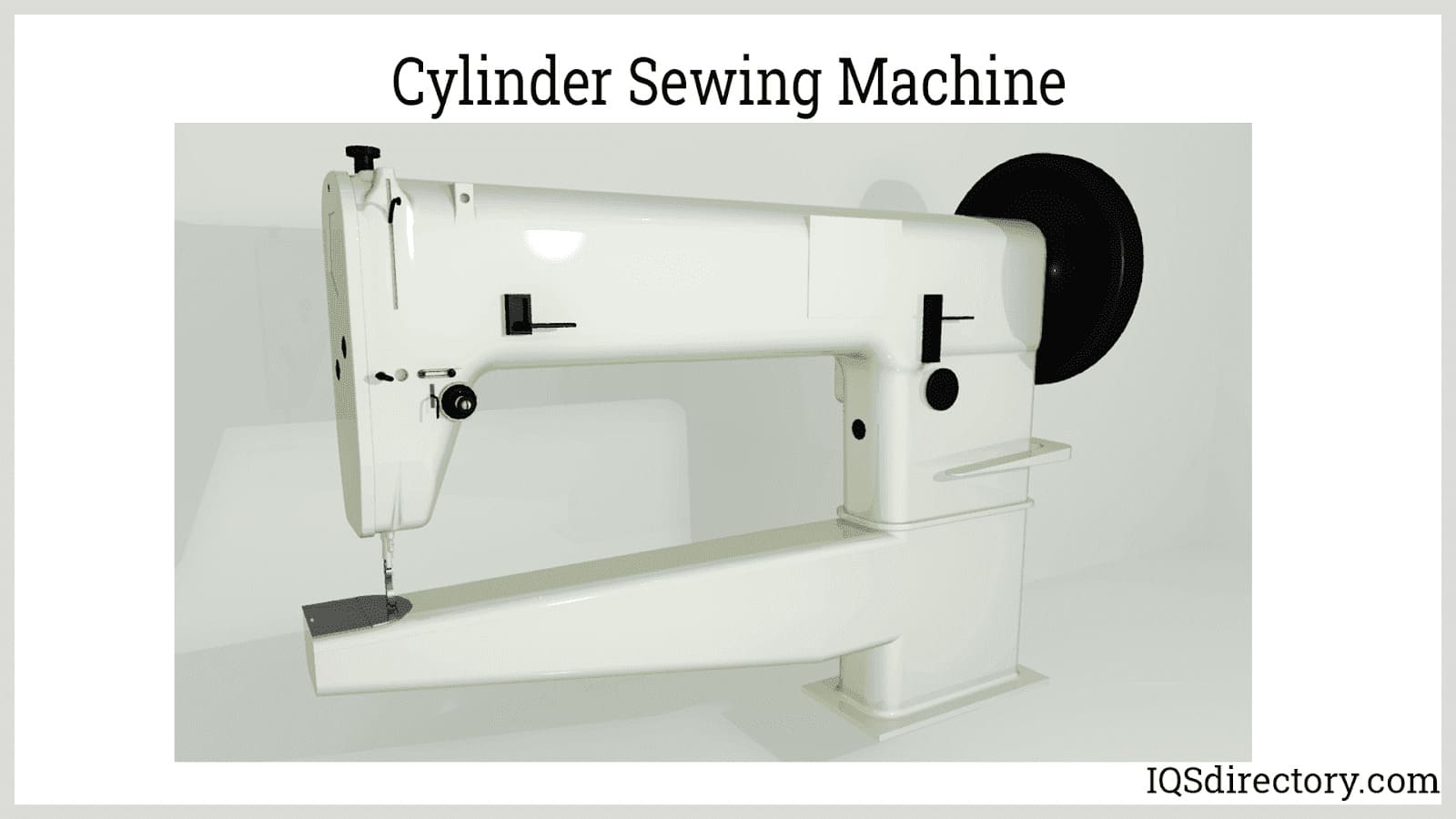
Post bed sewing is ideal for three-dimensional sewing and provides additional space for creating specialty items. With the bed elevated and projecting, it allows the material to be moved in multiple directions. This design minimizes the need for constant adjustments, making it easier to keep the material in place during stitching.
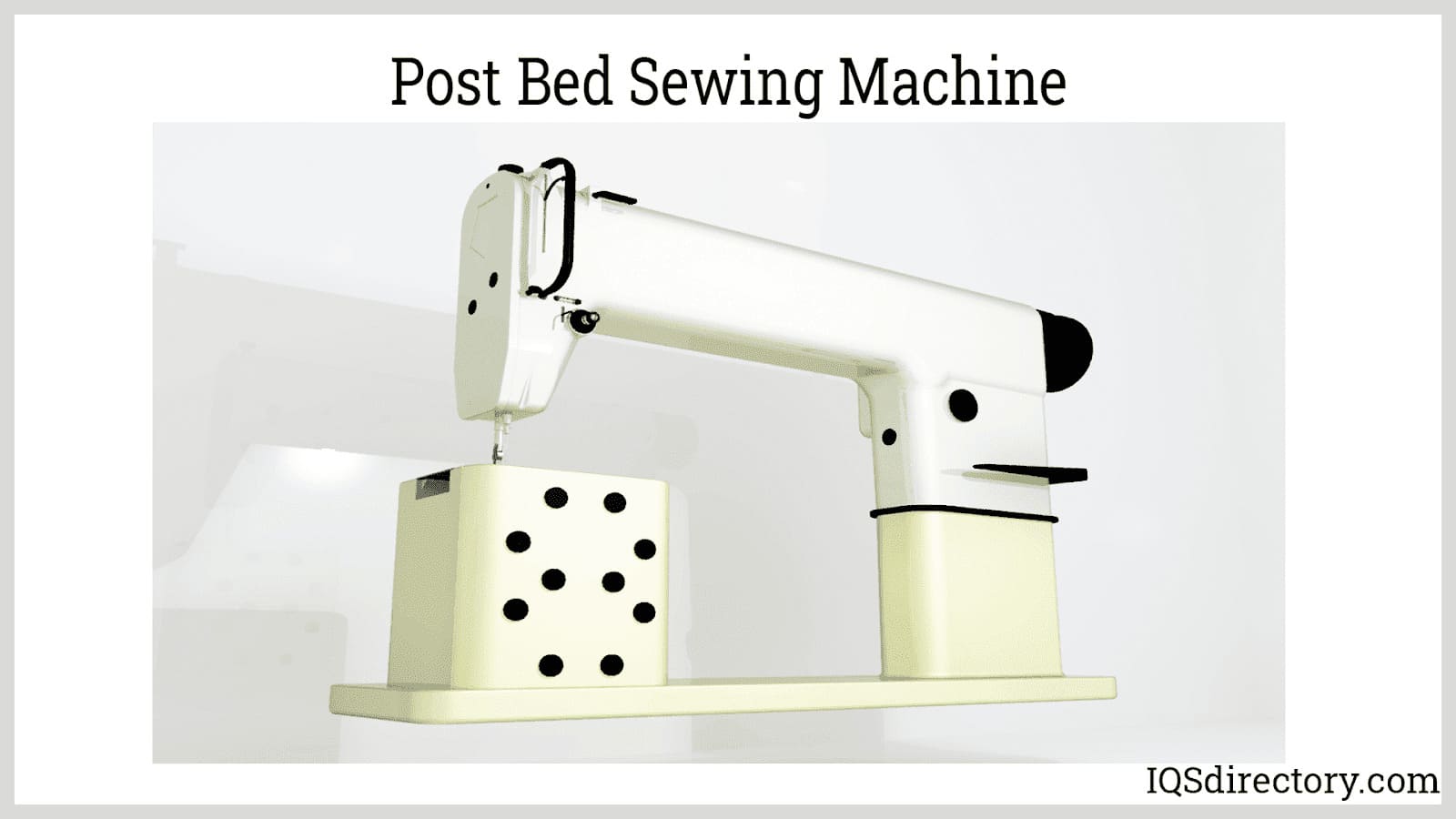
A free arm sewing machine is a variation of a cylinder sewing machine that features a removable base. This allows for easier access to cylindrical or tubular materials, enhancing the ability to sew items like sleeves and cuffs. While similar to other industrial machines in that many have removable bases, the free arm design specifically improves maneuverability and precision for certain sewing tasks.
In a cylindrical machine, the bed extends from the back of the machine, accommodating tubular or pipe-shaped items. This design is specifically intended for working with materials that require circular or cylindrical stitching, making it easier to maneuver and stitch these shapes effectively.
Feed-off-the-arm machines are versatile and equipped with two or three needles, enabling sewing with up to four threads. They produce two or three rows of chain lock stitches and use a looper instead of a bobbin. The primary advantage of these machines is their capacity to handle heavy or folded fabrics with ease.
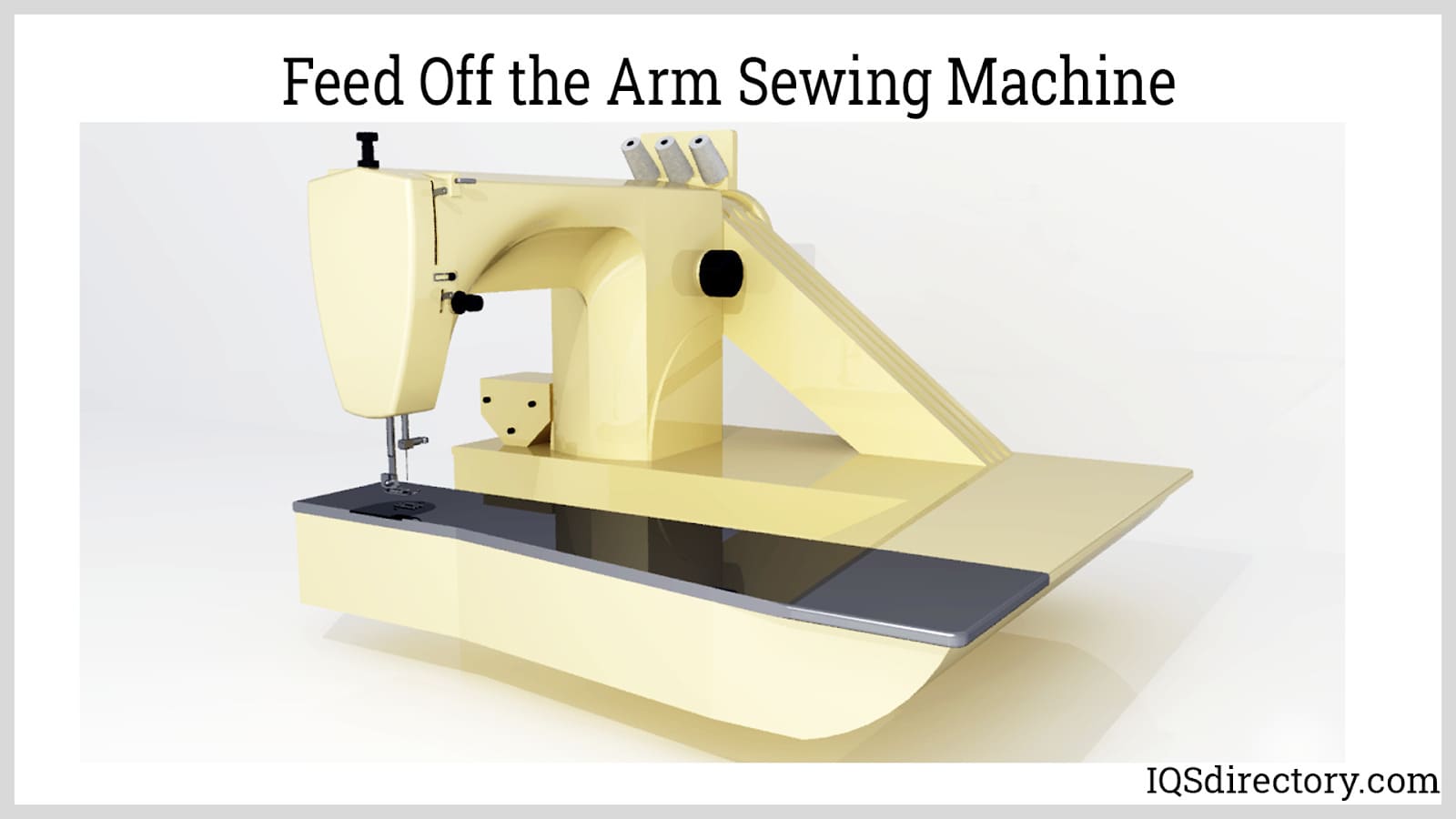
Industrial and contract sewing machines offer various feed mechanisms, each suited to specific sewing operations and machine types. Selecting the appropriate feed mechanism is crucial for ensuring optimal performance and compatibility with the intended sewing tasks.
Walking Foot: the fabric is moved by feed dogs, teeth like ridges in the throat of the machine. They grip the fabric and gently move it through the machine. Feed dogs prevent slippage of slippery or padded fabrics.
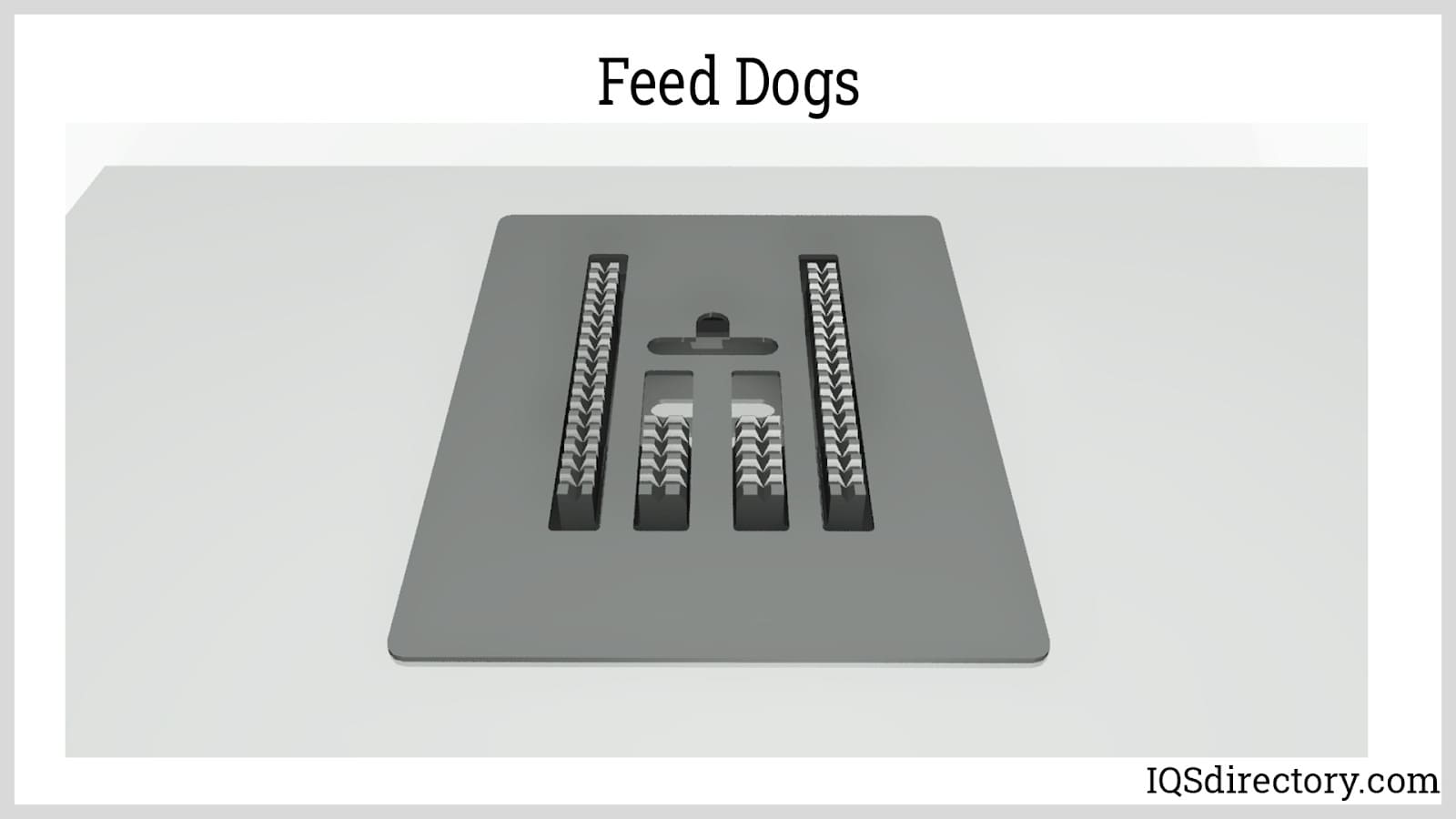
In the contract sewing industry, several standards govern production, including those from the International Organization for Standardization (ISO), American Society for Testing and Materials (ASTM), United States Military (MIL-STD), and Occupational Safety and Health Administration (OSHA). ASTM and ISO standards focus on product quality and performance, while OSHA regulations address worker safety. MIL-STD standards specify acceptable threads and textiles used in military applications.
For the contract sewing industry, ISO 9001:2008 is a key standard, focusing on certifying the quality of product management systems. Additionally, ISO 8239:1987 specifies standards for sewing machine needles and needle holders, including tolerances and combinations. The primary concern is ensuring that needles fit securely and function correctly in the machinery.
OSHA's focus is on minimizing risk factors related to employee workstations, specifically addressing the strain on the body caused by the posture required for sewing operations. OSHA provides detailed guidelines on the appropriate types of chairs, worktables, and pedals or mechanisms to ensure ergonomic safety and comfort for sewing machine operators.
OSHA does not cite specific pieces of legislation but emphasizes overall worker safety. It requires management to ensure a hazard-free work environment, addressing general safety standards and practices to protect employees from workplace risks.
ASTM provides detailed standards for the sewing industry, including specific guidelines for threads, stitches, and seams. Additionally, ASTM standards include an extensive list of criteria for suitable textiles used in the industry, ensuring quality and performance in sewing applications.
MIL-STD standards encompass all aspects of the sewing process, detailing acceptable materials and thread quality. They include specific guidelines for seam design, positioning, and overall construction to ensure compliance with military requirements.

A canopy is a structure with a connected fabric or metal covering that can give shade or shelter from weather elements such as the sun, hail, snow, and rain. For example, a tent with no floor can be...
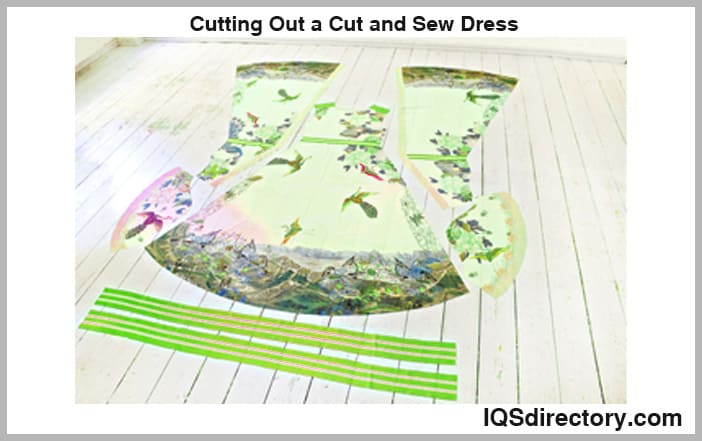
Cut and sew is a process for the manufacture of clothing where the design and pattern are printed on the raw cloth from which the garment is cut, ensuring full color, edge to edge print of the design and color...
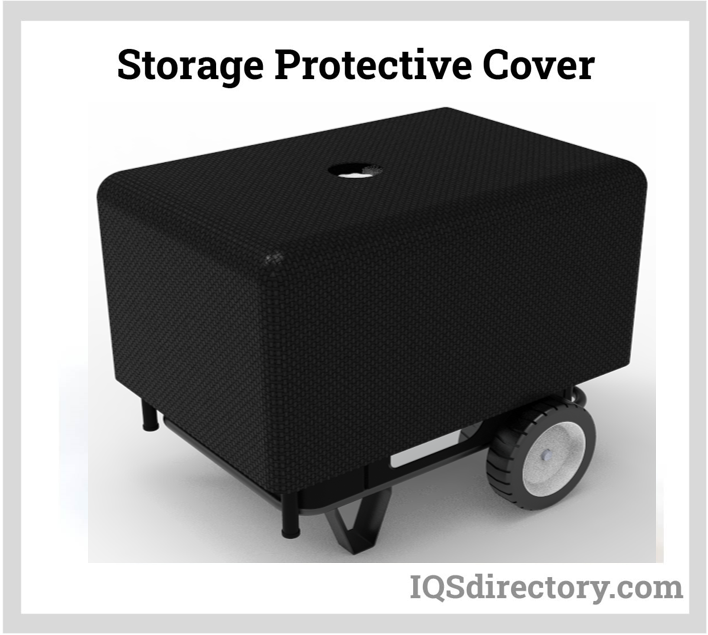
A protective cover is a sewn fabric that is specifically designed and used for protecting equipment, people, surfaces, and enclosures. Protective covers provide protection from the elements, UV rays, dirt, dust, moisture, and...
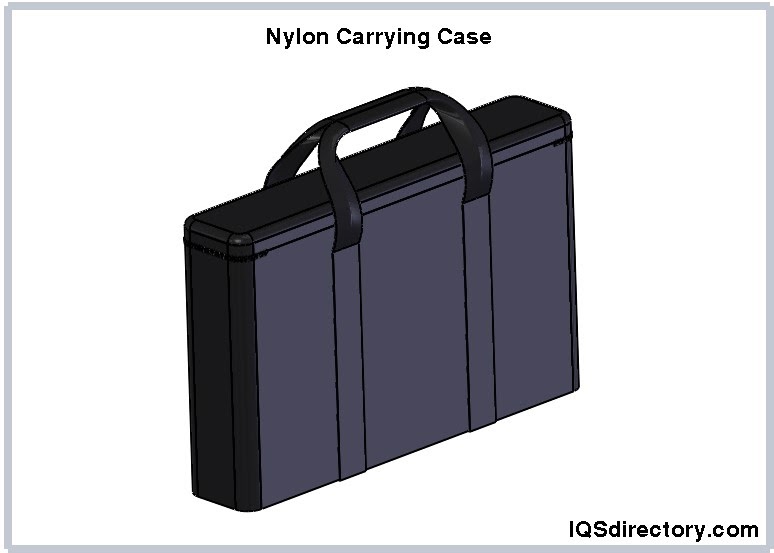
A carrying case is a way of conveniently organizing and transporting a collection of similar or dissimilar items for future use. There is a type and kind of carrying case to fit every possible application from protecting and storing cell phones to cases for speaking systems and technical equipment...
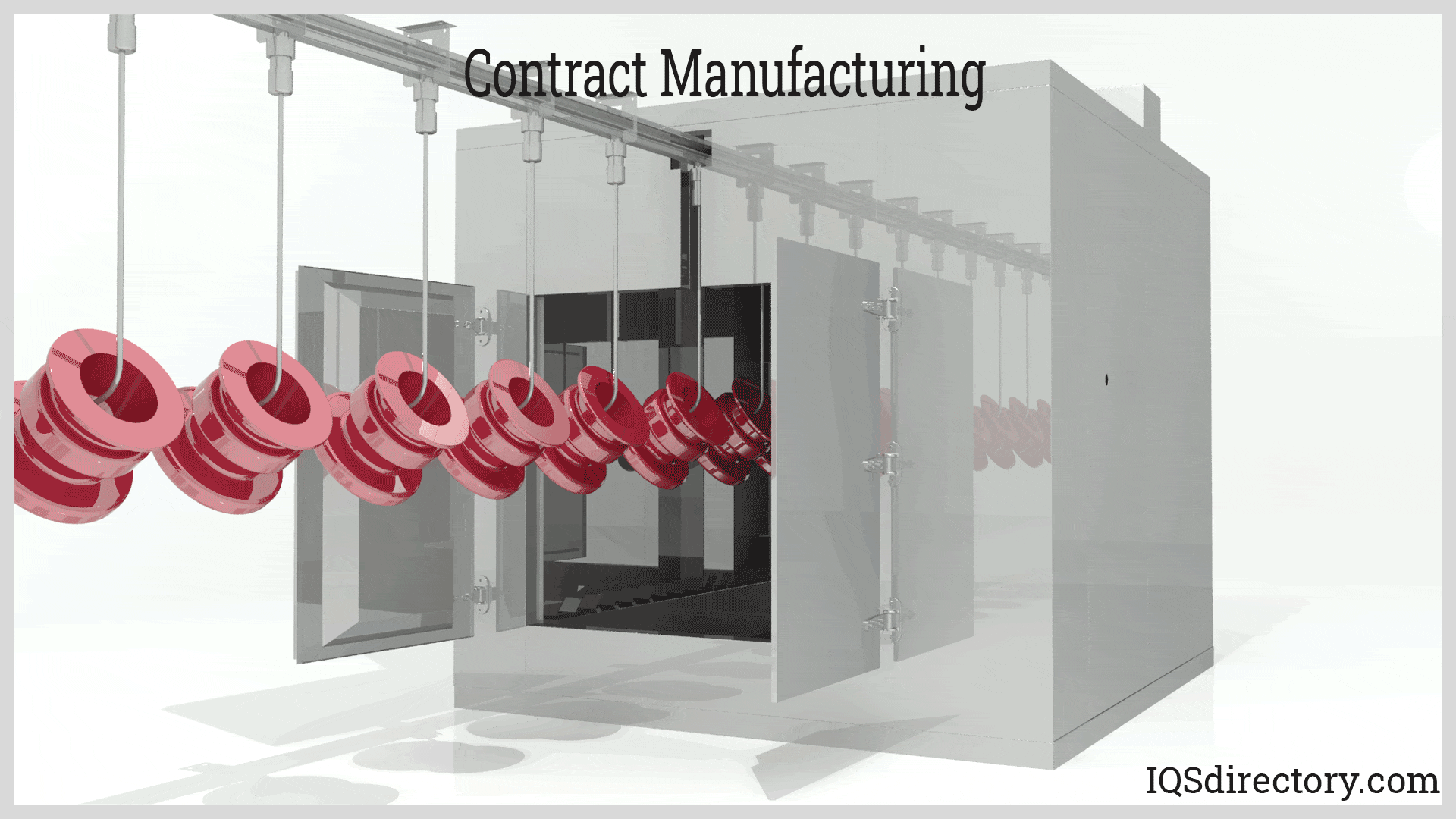
Contract manufacturing is a business model in which a company hires a contract manufacturer to produce its products or components of its products. It is a strategic action widely adopted by companies to save extensive resources and...
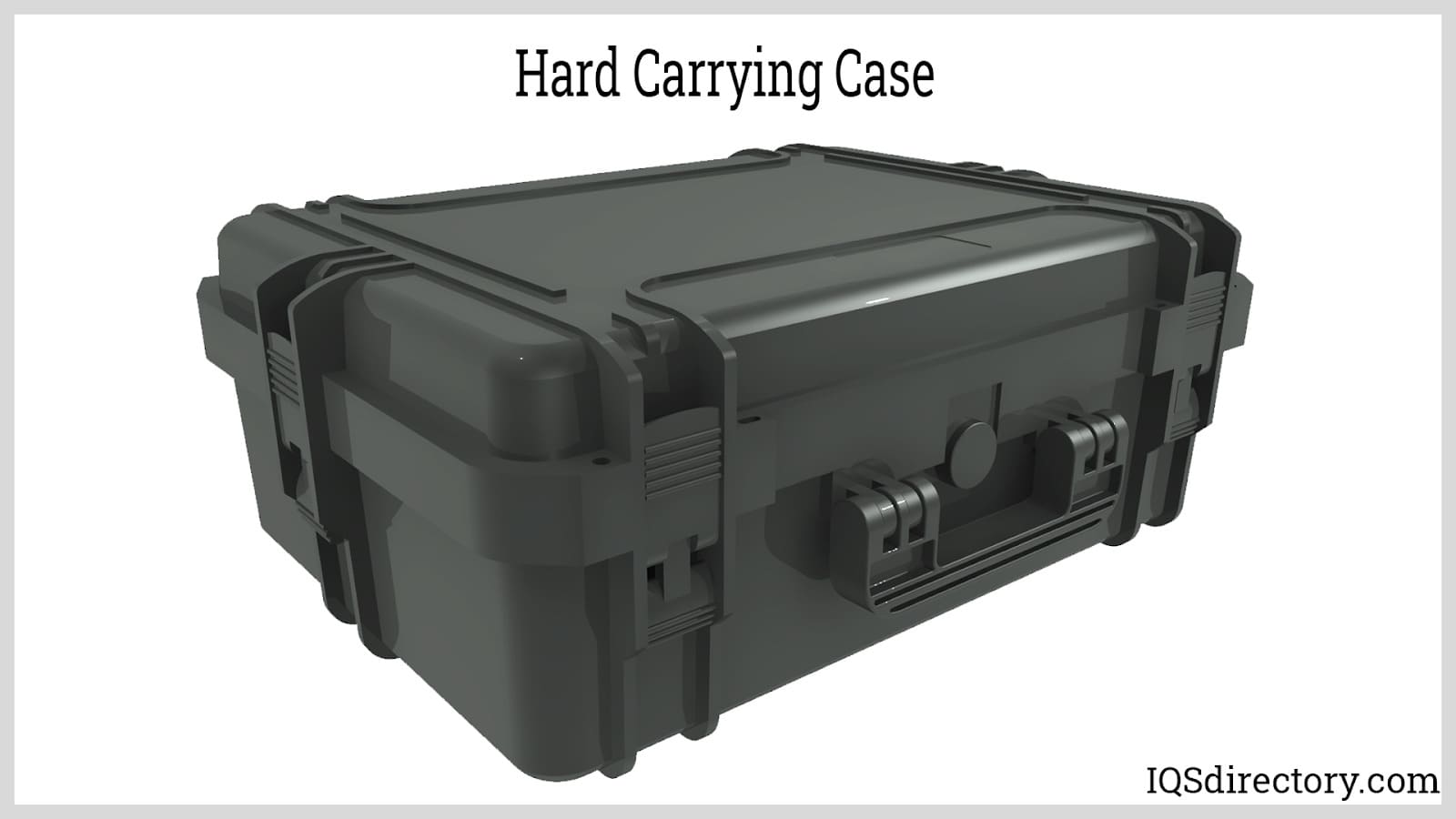
A hard case is a type of carrying case that is made from molded plastic, aluminum, veneered or laminated wood, or different types of metals. They are the most secure and durable forms of carrying cases and...
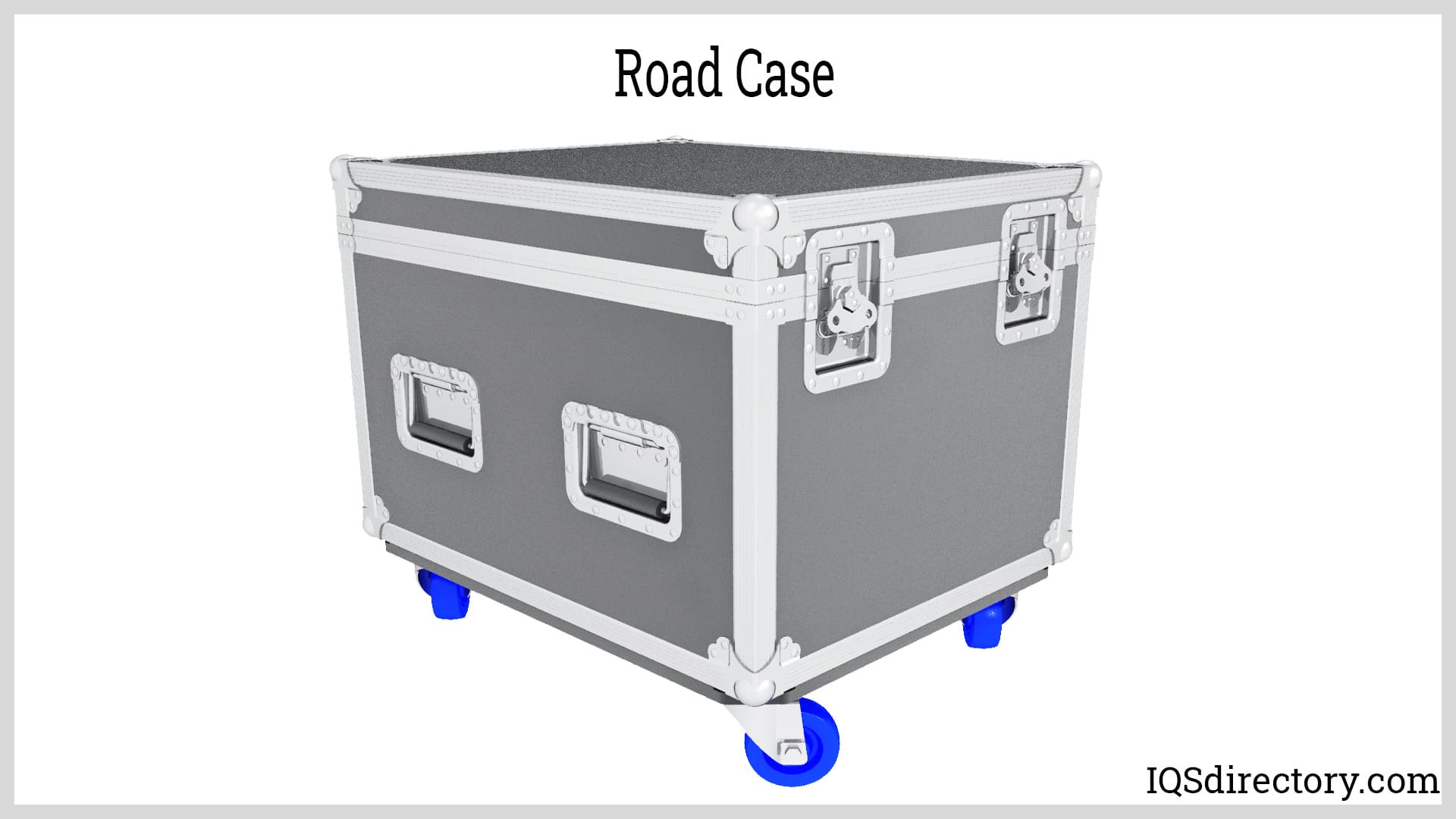
A road case is a ruggedly built, highly functional protective container with varying wall thicknesses that is capable of withstanding the riggers and handling of shipping. They are designed to meet...
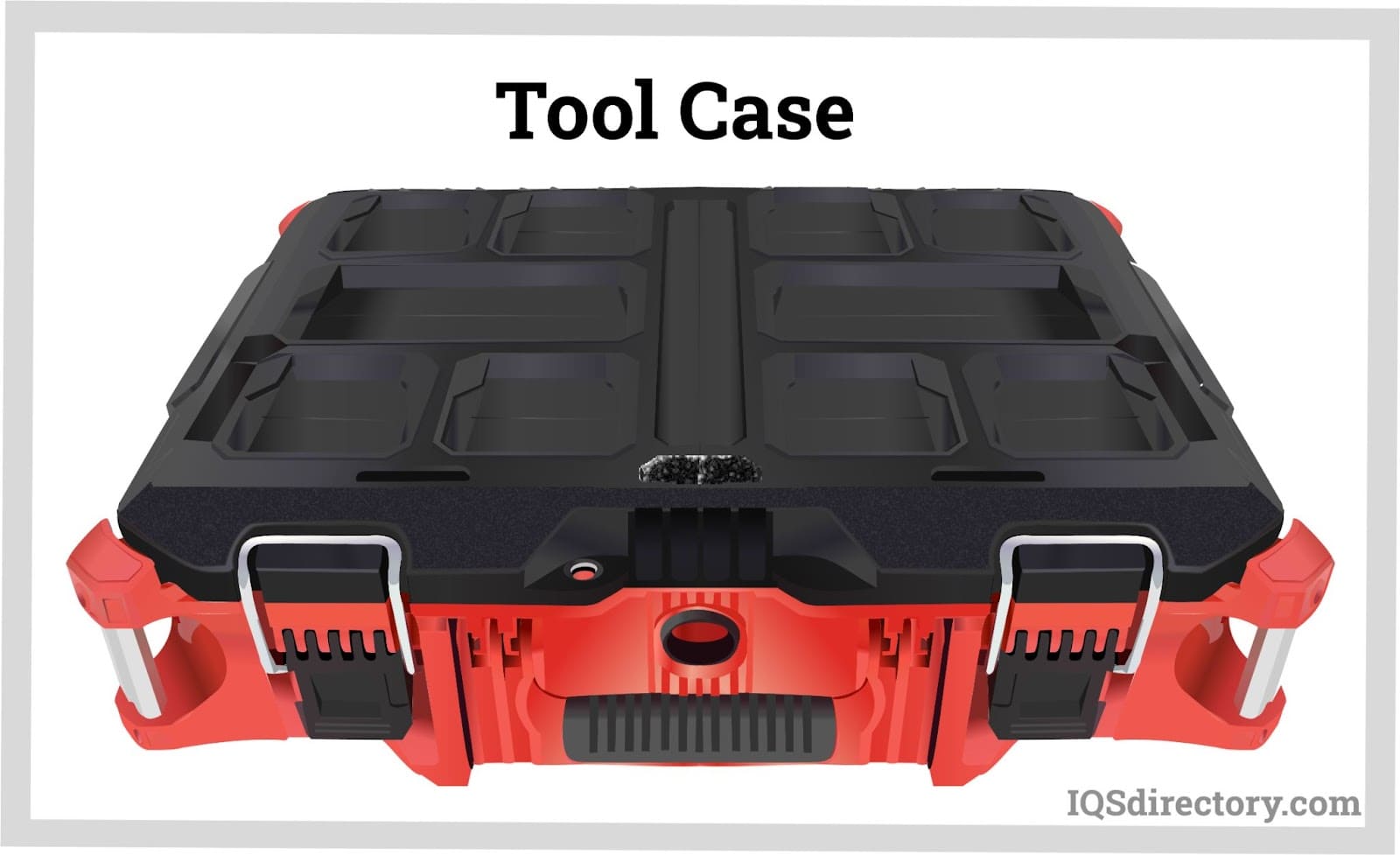
A tool case is a portable case designed to organize and protect tools and allow easy access and convenient availability. Standard tool cases can be used when working on a project. In addition, specialty and custom-designed tool cases are...
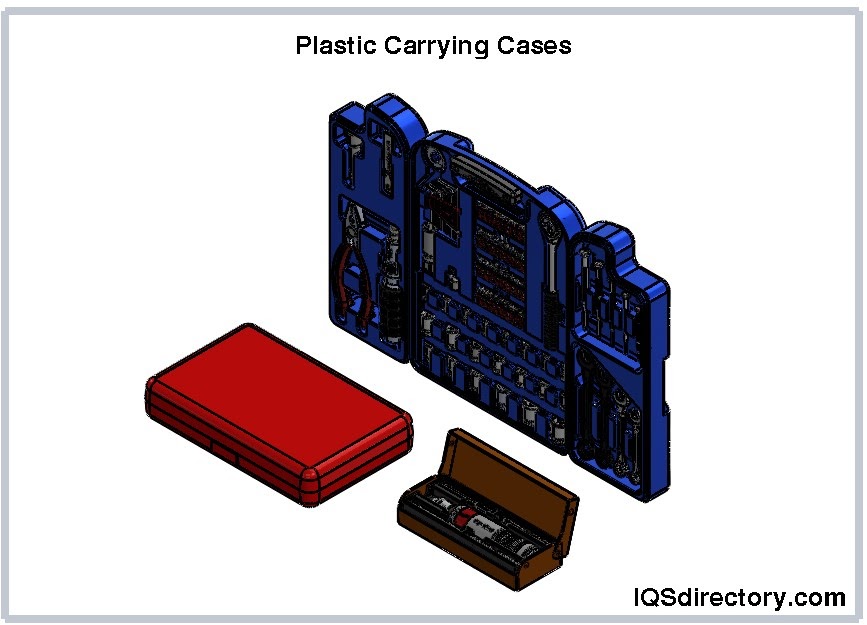
Cases designed to carry special valuables have been part of society throughout history back to the time of the Egyptians and before. Carrying cases are commonly found in any house stored in a garage, tucked away in a basement, or setting on a shelf...